We invite you to step into a world where luxury and comfort meet adventure and enchanting exploration. This World Cruise is a masterful mosaic of moments, weaving together 63 destinations in 14 countries, featuring 7 overnights; focused on uncovering the natural treasures and hidden gems of the Ring of Fire.
About Seabourn
Cruising on a Seabourn ship is unlike other forms of travel. The experience is luxurious, yet relaxed -elegant, yet casual -sumptuous, yet understated. Our intimate ships visit desirable destinations worldwide, sailing to landmark cities & hidden gems where larger vessels cannot follow. Our ships attract people who seek to share experiences beyond the ordinary. Our acclaimed staff offers a style of heartfelt hospitality that is sincere, thoughtful & personal as guests sail on the World's Finest Ultra-Luxury Resort at Sea.

About Luxury Round the World
The trusted resource for those who seek to experience the wonders of our world in ultra luxury, Luxury Round The World offers full-service travel consultancy specific to round the world cruises, global jet expeditions, and bespoke travel itineraries.
By the numbers
Destinations
Your Journey

Itinerary
Los Angeles, California
Los Angeles, California
Overview
Departure 17:00
Los Angeles is a city spinning with energy and creativity, where tomorrow's trends are born, nurtured and released. Having one of the best climates in the world, Los Angeles draws visitors year-round from all over the world. Officially founded in 1781, the modern-day metropolis of Los Angeles sprawls across over 4,000 square miles between the beautiful Pacific Ocean and the snow-capped San Gabriel Mountains. Los Angeles is considered the entertainment capital of the world, a vibrant city of visual delights with more museums than any other U.S. city.
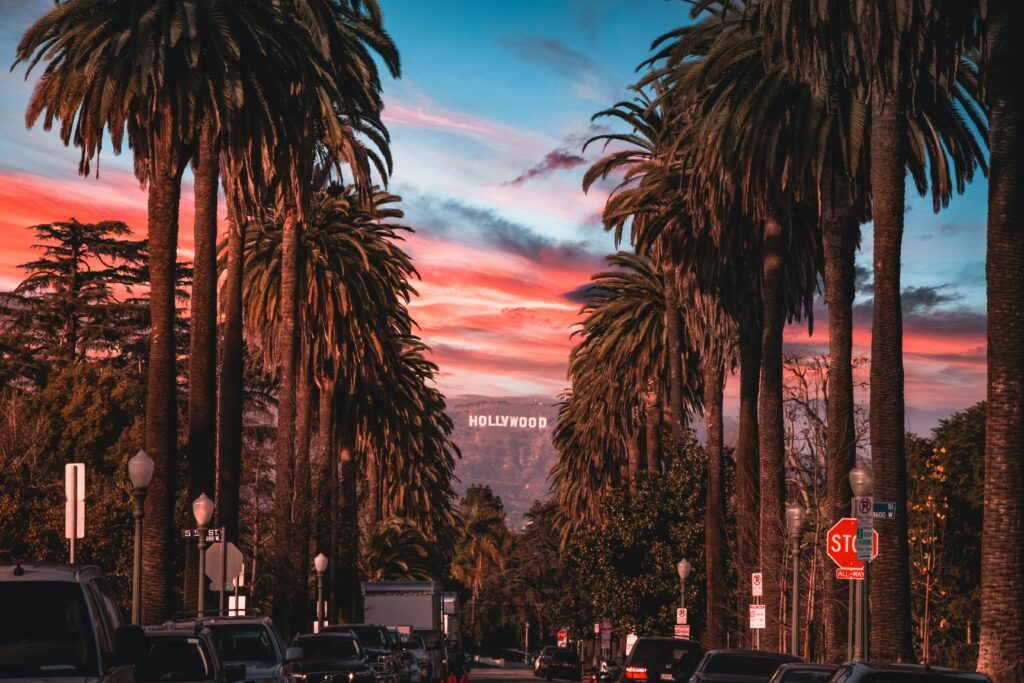
Day at Sea
Day at Sea
Overview
International Waters
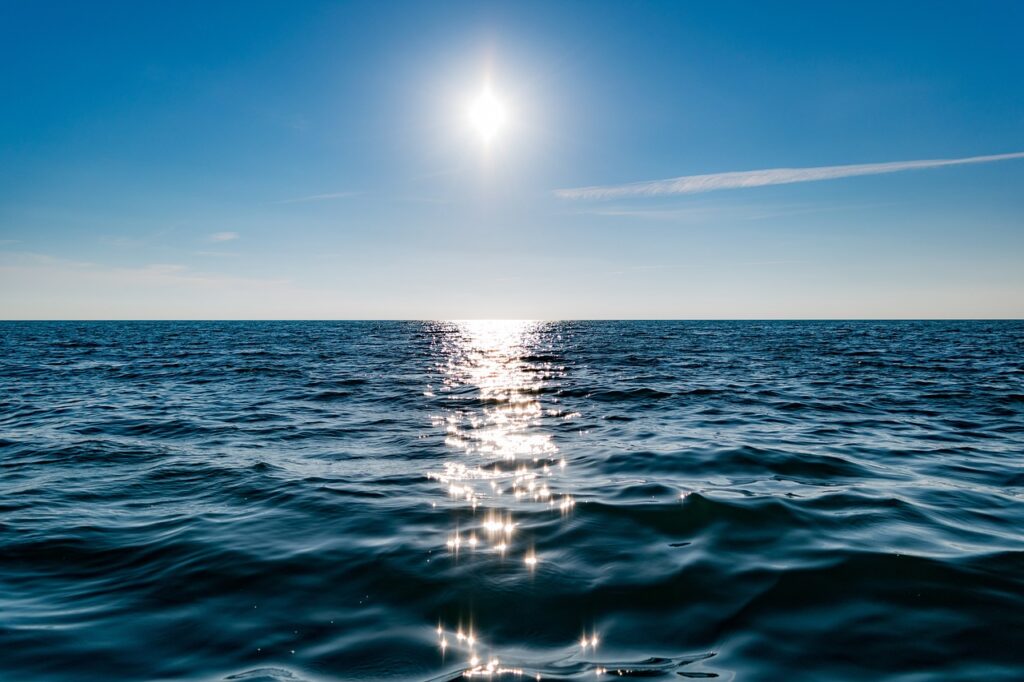
Honolulu, Hawaii, USA
Honolulu, Hawaii, USA
Overview
Arrival 07:00 / Departure 23:00
Home to the state capitol and the majority of Hawaii's population, the island of Oahu is a vibrant mix of natural, cultural and historic wonders. In Honolulu, an array of cultures blends harmoniously, allowing each to retain its distinct flavor. The downtown sector combines Hawaii's royal history with the modern-day action of a major metropolitan center. Waikiki Beach, with its impressive hotels and glittering atmosphere, is a famous tourist hub and resort destination of international renown. Honolulu is also the location of Diamond Head, Oahu's famous volcanic landmark, and Pearl Harbor, the largest natural harbor in Hawaii and the only naval base in the United States to be designated a National Historical Landmark.

Nawiliwili, Kauai, USA
Nawiliwili, Kauai, USA
Overview
Arrival 08:00 / Departure 18:00
The Garden Isle is a relaxed reminder of old-time Hawai’i. Villages like Hanapepe invite you to get your toes in the sand at one of the island’s many beaches, or step up to a roadside truck or stand for a refreshing, neon-tinted “shave ice.” Natural splendors abound on Kauai, including sprawling Waimea Canyon, the “Grand Canyon of the Pacific,” the dramatic fluted cliffs of the NaPali Coast or the Kilauea Point Lighthouse, standing proud on the northernmost point in the Hawai’ian Islands.
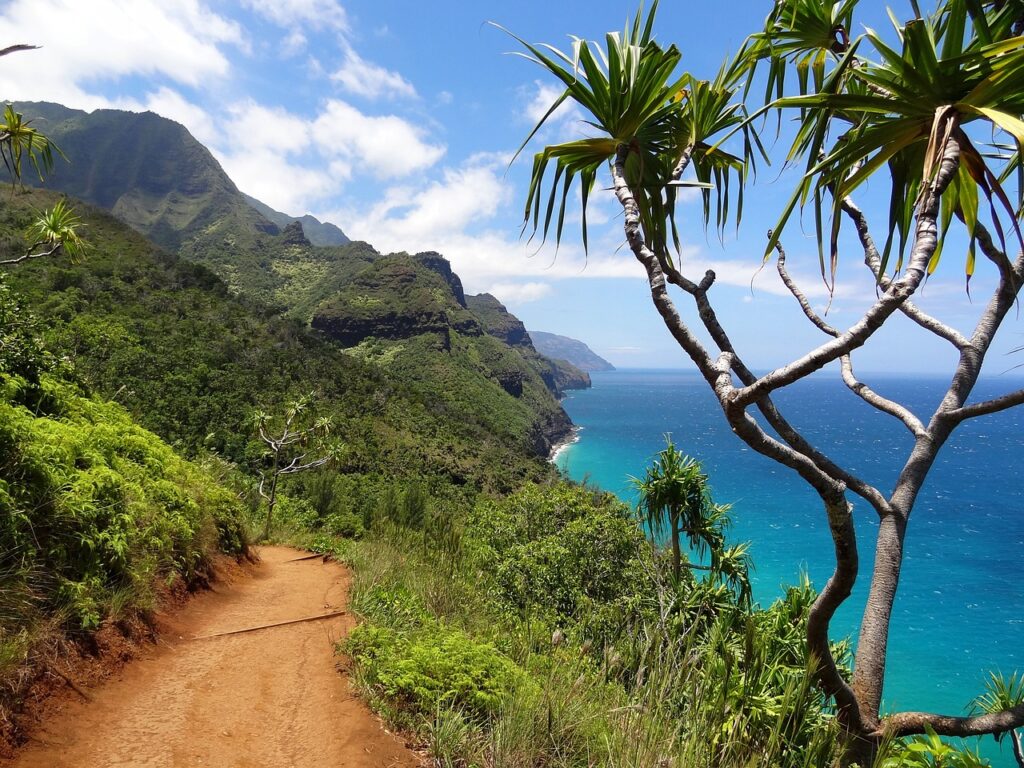
Day at Sea
Day at Sea
Overview
International Waters

Bora Bora, French Polynesia
Bora Bora, French Polynesia
Overview
Arrival 08:00 / Departure 22:00
Bora Bora, has long been noted for its stunning beauty. A tiny island, less than 20 miles in circumference, Bora Bora is dominated by the castle-like Mount Otemanu and Mount Pahia, two volcanic peaks with lush tropical slopes. A protective coral reef encloses Bora Bora, and the lagoon is dotted with colorful motus, or islets. Perfect white-sand beaches give way to brilliant turquoise and sapphire-colored waters, and locals in the small village of Viatape sell colorful fabrics, sculptures carved from native wood and precious black pearls.
Tender required.
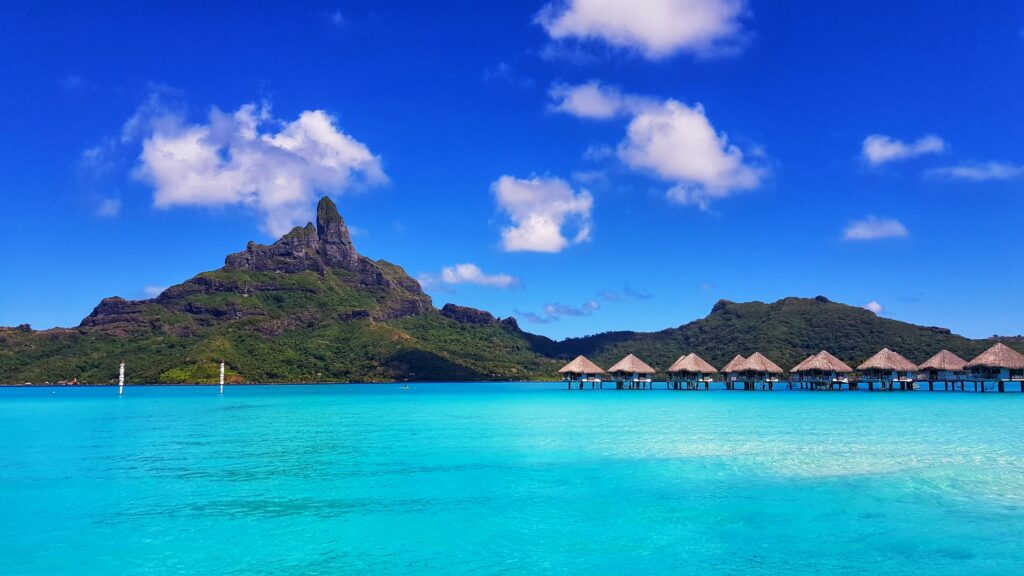
Maroe Bay, Huahine Iti, French Polynesia
Maroe Bay, Huahine Iti, French Polynesia
Overview
Arrival 08:00 / Departure 18:00
Huahine weaves its magic from the very moment you set foot on its shores. This picturesque island, with its lush forests, untamed landscapes, and charming villages, remains one of French Polynesia's best-kept secrets. It's a place where you can immerse yourself in the local way of life. Encircled by a pristine, crystal-clear lagoon, Huahine consists of two islands, each adorned with magnificent bays and pristine white-sand beaches that enhance the overall experience. Unfazed by the modern world, Huahine preserves the slower, more tranquil pace of old Polynesia. Its eight quaint villages are welcoming havens where the friendly residents greet visitors with genuine kindness. Huahine's magic is but one thread in the stunning fabric of the enchanting tapestry of French Polynesia.
Tender required.
Papeete, French Polynesia
Papeete, French Polynesia
Overview
Arrival 07:00 / Departure 22:00
Welcome to the heart of the South Pacific, surrounded by crystal-clear turquoise waters, and lush tropical landscapes, all permeated by vibrant Polynesian culture. Papeete’s centralized location to the stunning islands of French Polynesia offers visitors a chance to explore nearby atolls, lagoons, and pristine beaches that define the quintessential tropical paradise. Explore the bustling markets, such as Le Marché de Papeete, where you can experience the colorful tapestry of local life, from traditional crafts and fresh produce to the enchanting sounds of traditional music. Embrace the warm hospitality of the Tahitian people and witness captivating dance performances that showcase the islands' rich cultural heritage. From snorkeling and diving in the coral gardens of Moorea, to shopping with a Seabourn chef in a local market, to exploring the island's interior on a Safari excursion, there's no shortage of adventure. The surrounding waters offer opportunities for sailing and whale-watching, allowing visitors to connect with the breathtaking marine life that thrives in this remote corner of the Pacific.

Raiatea, Society Islands, French Polynesia
Raiatea, Society Islands, French Polynesia
Overview
Arrival 08:00 / Departure 18:00
The second-largest of the Society Islands is practically twinned with its neighbor Taha’a. Actually they are connected by a reef in the same lagoon and may have been one island in the past. The main town, Uturoa is where most of the population lives. It’s lively, although no competition for Tahiti. Called the Sacred Island, Raiatea’s name means “bright sky,” and it was probably the first human community in the islands. The ancient sacred site of Taputapuatea is a UNESCO World Heritage Site, and may have been the place from which Polynesian migrations to Hawaii, the Cook Islands, New Zealand and the rest of the South Pacific started. Although less touristed than Tahiti, caring for visitors has grown in importance. Agriculture is mainly given over to coconuts, pineapples and vanilla. Vanilla orchids are hand-pollinated, since Raiatea has no insect pollinators for vanilla blossoms. South Seas pearls are farmed in the lagoon in various colors. A hike up Mt. Tapioi rewards with stunning views of the lagoon and sea, and tall Bora Bora on the far horizon. Another favorite hike leads to the island’s three waterfalls. The tallest peak, Mt. Temehani, is the place to look for the unique, five-petaled Tiare Apetahi flowers that grow nowhere else. The lagoon is dotted with tiny motus, which are mostly coral sand beach, and are popular for castaway swimming and snorkeling adventures.
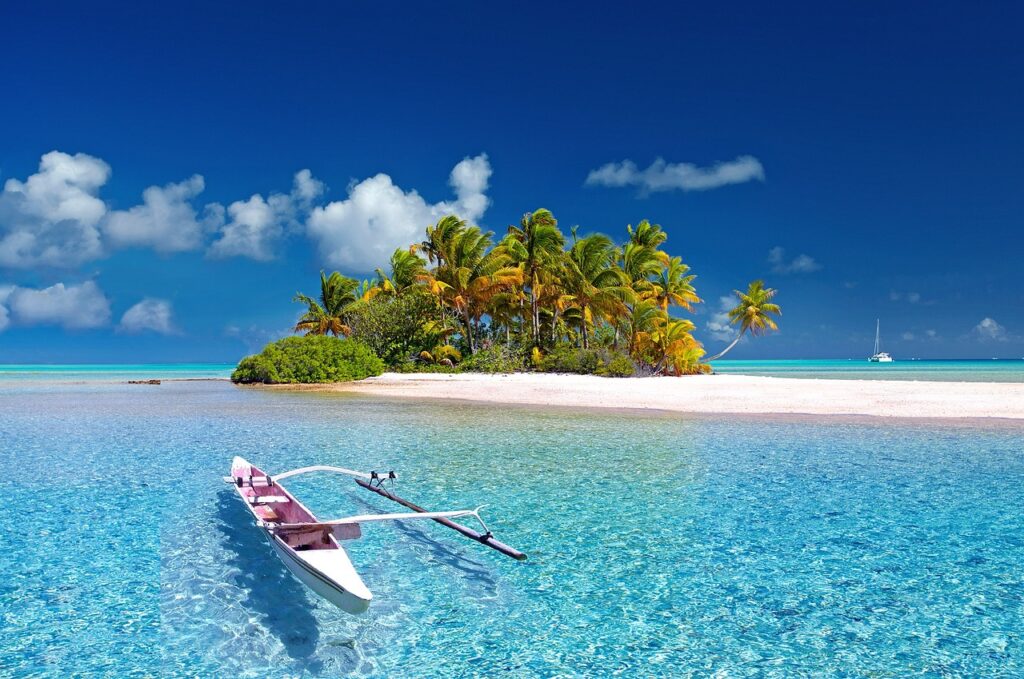
Day at Sea
Day at Sea
Overview
International Waters
The International Date Line is an imaginary line of navigation on the surface of the earth running between the North Pole and the South Pole to demarcate a change from one calendar day to another. It passes across the middle of the Pacific Ocean approximately along the 180th degree of longitude, but deviating at various points to include overlapping areas governed by some island groups and territories to maintain internal uniformity. It is located halfway around the globe from the Prime (Greenwich) Meridian at 0 degrees longitude. Traveling from east to west, the local time gains one hour (clock set back one hour) for each 15 degrees of longitude traveled. This would amount to 24 hours gained for one circumnavigation, unless the calendar date was changed one day forward upon crossing the halfway point. Likewise, when traveling west to east, the calendar date is changed one day backward when crossing the date line. Seabourn voyage itineraries are based upon days actually spent on board, and the dates are noted for convenience, including days lost or gained in crossing the International Date Line. Departure days and disembarkation days are always quoted in local time and date.

Suva, Viti Levu, Fiji
Suva, Viti Levu, Fiji
Overview
Arrival 08:00 / Departure 18:00
The vibrant heart of Viti Levu's southeastern coast, beckons with its tropical allure. Suva stands as the cosmopolitan nucleus of the South Pacific, housing approximately a third of Fiji's populace. The architecture of this urban gem is heavily influenced by the British colonists who moved from Levuka to relocate Fiji's capital here in 1882, thanks to its inviting deep harbor and ample lands. Amidst modern high-rises, remnants of the British colonial era adorn the cityscape, a testament to its enduring role as a trade hub.
It's a dynamic metropolis that harmoniously blends history, culture, and commerce. A perfect day in this jewel comprises of a stroll through historical sites, exploration of captivating museums, basking in the beauty of lush parks, and haggling at the bustling local markets.

Dravuni Island, Fiji
Dravuni Island, Fiji
Overview
Arrival 08:00 / Departure 18:00
Discover the rare gem of Fiji – Dravuni Island, a tiny paradise nestled in the Kadavu Group. Like a postcard of Fiji's natural beauty, it boasts pristine white sands, gently swaying palm trees, and crystal-clear azure waters. Unlike the more urbanized ports in the country, Dravuni Island offers an authentic Fiji experience. Here, you'll encounter a charming Fijian village, but no fancy restaurants, ATMs, or WiFi connections. It's the ideal place to disconnect from the outside world and immerse yourself in the warm embrace of the locals and the island's breathtaking nature.
Tender required.
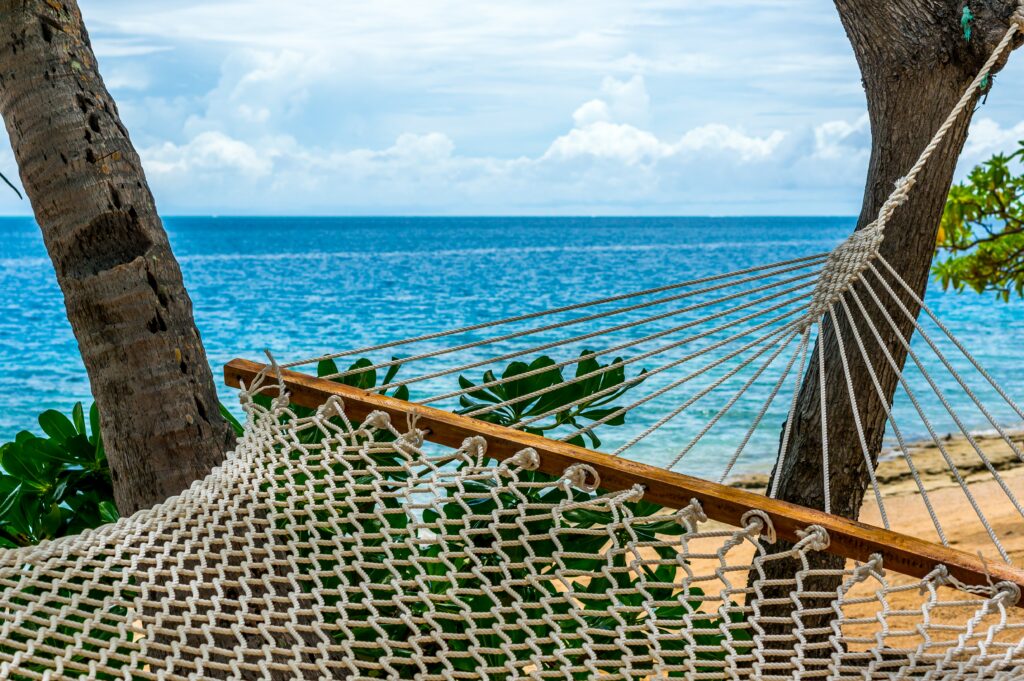
Day at Sea
Day at Sea
Overview
International Waters

Russel (Bay of Islands), New Zealand
Russel (Bay of Islands), New Zealand
Overview
Arrival 08:00 / Departure 18:00
Russell holds the distinction of being New Zealand's first permanent European settlement and served as the country's first capital. Steeped in history, the town invites visitors to stroll through its charming streets lined with well-preserved heritage buildings, offering a glimpse into its colonial past. The iconic Christ Church, built in 1835, and Pompallier Mission, a French-style Catholic mission, are just a couple of the historic landmarks that transport visitors back in time. Set against the backdrop of the stunning Bay of Islands, Russell is surrounded by crystal-clear waters, lush greenery, and a collection of heavenly islands. The bay is celebrated for its marine life, and visitors can indulge in various water activities, including sailing, dolphin watching, and fishing. The scenic beauty of the region, with its pristine beaches and secluded coves, makes it an ideal destination for those seeking a tranquil escape and a connection with nature. For a rare experience, visit to the Kawiti Glow-Worm Caves, where a guided walk unveils the mesmerizing spectacle of glow-worms illuminating the subterranean world with their ethereal luminescence. Beyond its history and natural beauty, Russell exudes a warm and welcoming atmosphere. The local community takes pride in sharing the rich Māori and European heritage, offering cultural experiences that include traditional ceremonies, arts, and crafts.
Tender required.
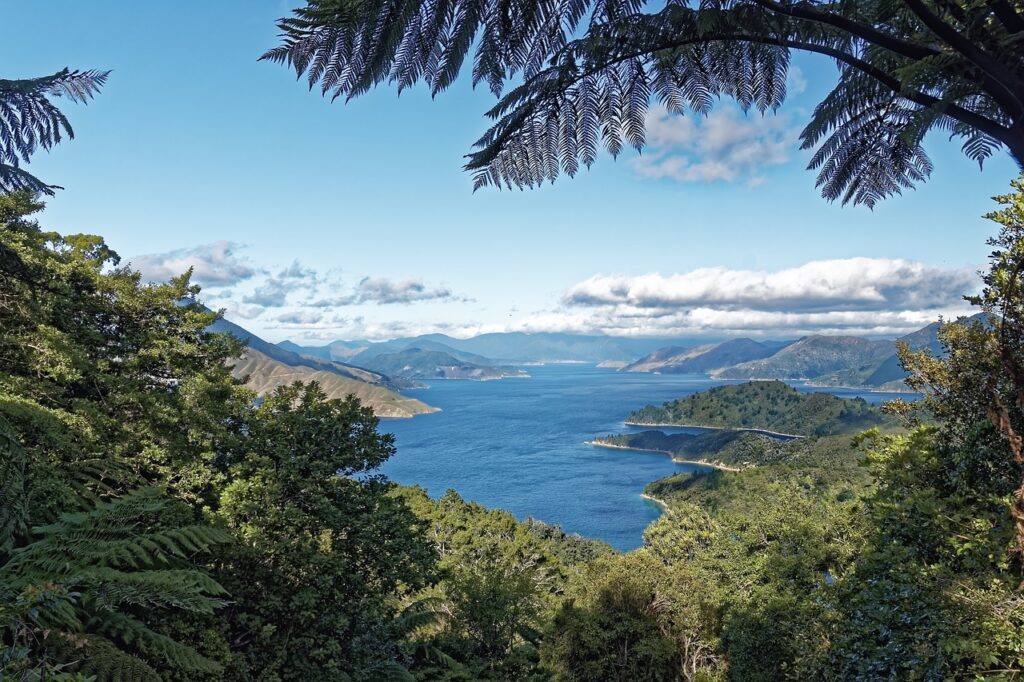
Auckland, New Zealand
Auckland, New Zealand
Overview
Arrival 07:00 / Departure 13:00 (Overnight)
Auckland is one of the few cities in the world to have harbors on two separate bodies of water. The central part of urban Auckland covers a narrow isthmus between the Manukau Harbor on the Tasman Sea, and the Waitemata Harbor on the Pacific Ocean. In addition, Auckland's diverse geography and warm, humid climate has inspired a lifestyle regularly ranked in the world's top ten. A half hour drive from the city there is an abundance of activities: sailing to a secluded island, trekking through the rainforest, picnicking on a volcano, sampling wines at a vineyard or exploring a black sand beach.
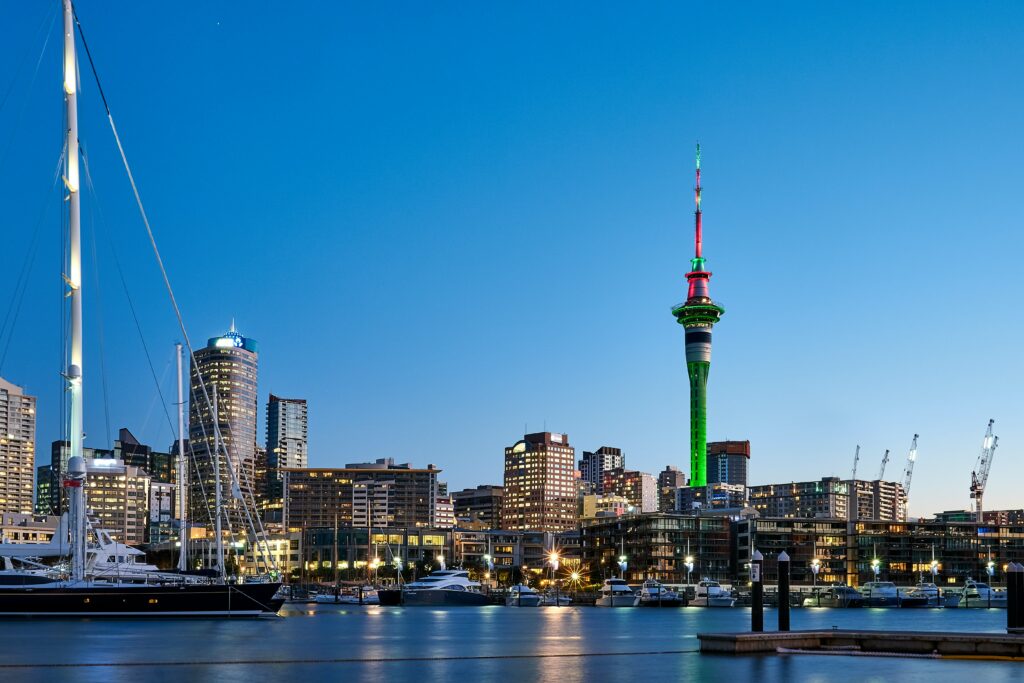
Day at Sea
Day at Sea
Overview
International Waters

Wellington, New Zealand
Wellington, New Zealand
Overview
Arrival 09:00 / Departure 18:00
Visually stunning, Wellington is nestled between a magnificent harbor and a natural amphitheatre of forest-clad hills. Its compact size, combined with cultural sophistication, makes it New Zealand's most inspiring urban destination. Wellington's cultural crowning jewel is Te Papa, a donation-only museum that celebrates Australasian natural history, science and culture. Exhibits include Maori artifacts, an extensive Pacific Cultures collection and interactive science exhibits. The city's art scene is flourishing, with numerous galleries and craft markets displaying the work of the country's top artists and craftspeople.
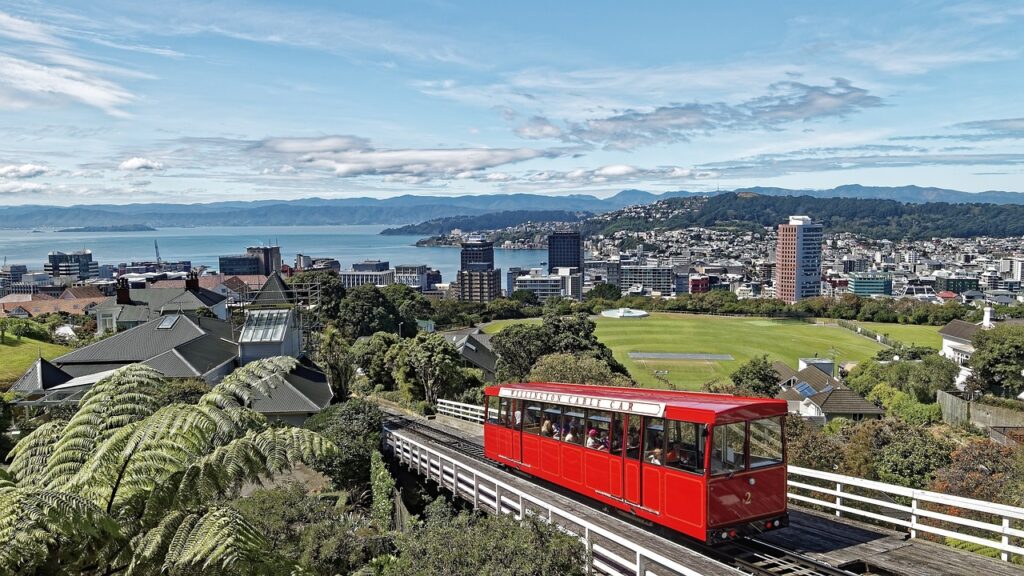
Kaikoura, New Zealand
Kaikoura, New Zealand
Overview
Arrival 08:00 / Departure 17:00
Kaikoura draws visitors from all over the world for the prolific marine life in the surrounding waters. Whale (including sperm whales), dolphin and seal watching tours operate year-round. There is a scenic walkway from the town center out to Point Kean, and there are colonies of fur seals on the rocky shores. The Fyffe House is a 19th century home built on a foundation of whale bones, with a museum of whaling history. It’s also famous for fresh seafood including crayfish (known elsewhere as spiny lobsters) and the delicious Paua (also known as abalone.)
Tender required.
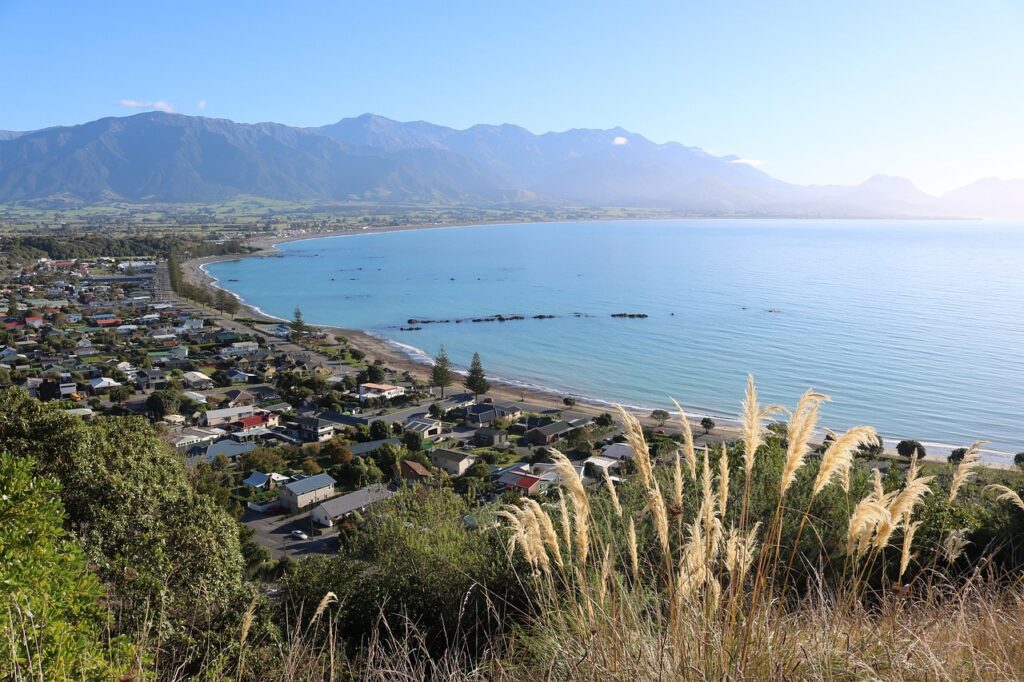
Akaroa (Christchurch), New Zealand
Akaroa (Christchurch), New Zealand
Overview
Arrival 08:00 / Departure 17:00
Nestled on the Banks Peninsula, surrounded by breathtaking South Island landscape, this French-inspired coastal town is just a scenic drive from Christchurch. Stroll through Akaroa's charming streets, where colorful colonial architecture, cozy cafes, and friendly locals welcome you. Adventure seekers can explore verdant hiking trails, offering panoramic views of turquoise waters and lush rolling hills. Wildlife lovers will find that Akaroa's true magic lies in its awe-inspiring harbor. Hector's dolphins, the world's smallest and rarest, playfully dwell within the waters, alongside fur seals and an array of seabirds. Akaroa is a haven for nature enthusiasts, history buffs, and anyone seeking an escape from the urban bustle. Whether you're drawn to the wildlife, the French influence, or the serene landscape, Akaroa promises an unforgettable and tranquil getaway.
Tender required.
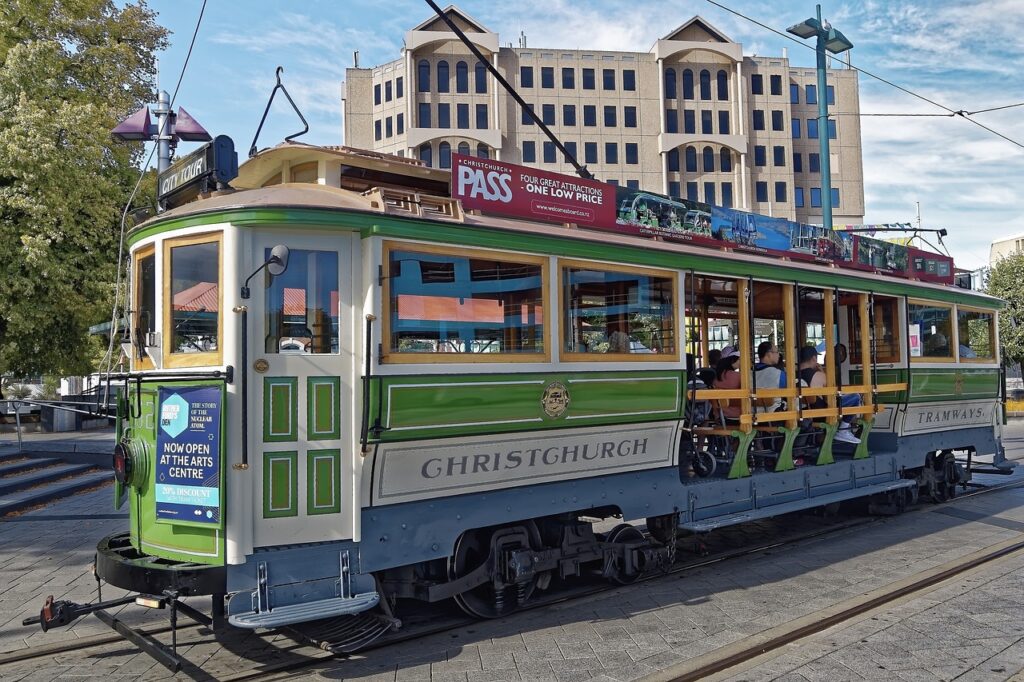
Port Chalmers (Dunedin), New Zealand
Port Chalmers (Dunedin), New Zealand
Overview
Arrival 08:00 / Departure 17:00
Port Chalmers is the main port for the city of Dunedin. Situated in a natural amphitheater at the head of a long fjord-like inlet, Dunedin was the first permanent European settlement in New Zealand, founded in 1848. Not long afterwards, gold was discovered in the region, and the province quickly became the richest and most influential in the colony. While Christchurch is New Zealand's most English town, Dunedin is its most Scottish; the name Dunedin is the old Gaelic name for Edinburgh. Numerous distinctive and historic buildings remain from the time of its predominantly Scottish settlers, preserving its architectural heritage.
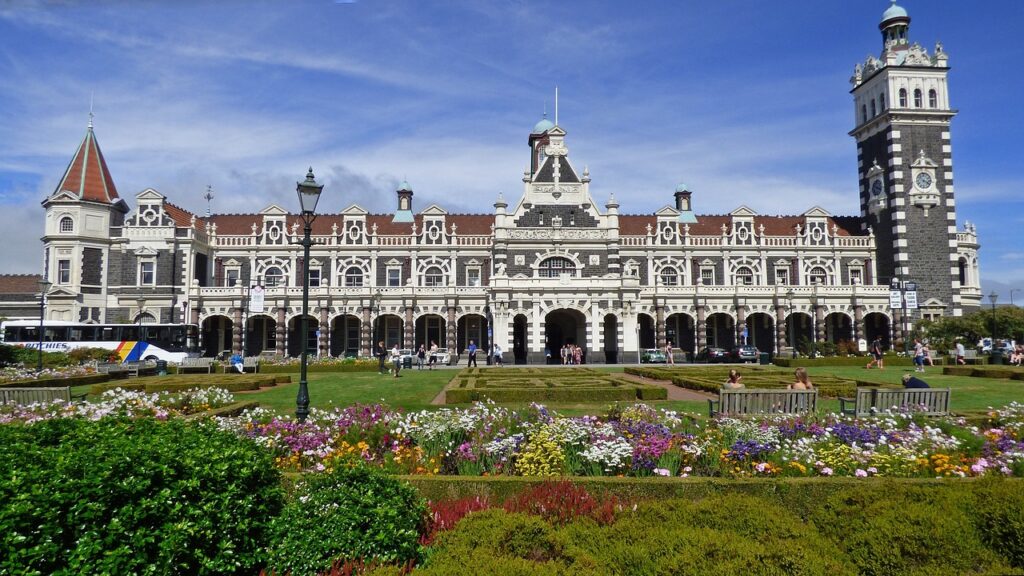
Oban, Stewart Island, New Zealand
Oban, Stewart Island, New Zealand
Overview
Arrival 08:00 / Departure 17:00
Stewart Island overflows with opportunities to get up close to New Zealand’s untouched landscapes, rich Maori heritage, and unique birdlife. Lush forests, rare flora and fauna, golden beaches, and rugged coastlines, provide a diverse ecosystem oasis for nature enthusiasts. Oban serves as the gateway to Rakiura National Park, where visitors can embark on bird-watching expeditions and scenic walks. Oban also holds a significant place in New Zealand's history, reflecting both Maori and European influences. Visitors can explore the local museums to delve into the island's past, gaining insights into the Maori heritage and the European settlers who once called Stewart Island home. Stewart Island is a must-visit for wildlife lovers and bird watchers, offering opportunities to witness a variety of bird species, including the iconic kiwi bird, in addition to other native and rare species in their natural habitat. The island's coastal waters are also frequented by seals, sea lions, and dolphins, providing a chance for marine wildlife encounters.
Tender required.
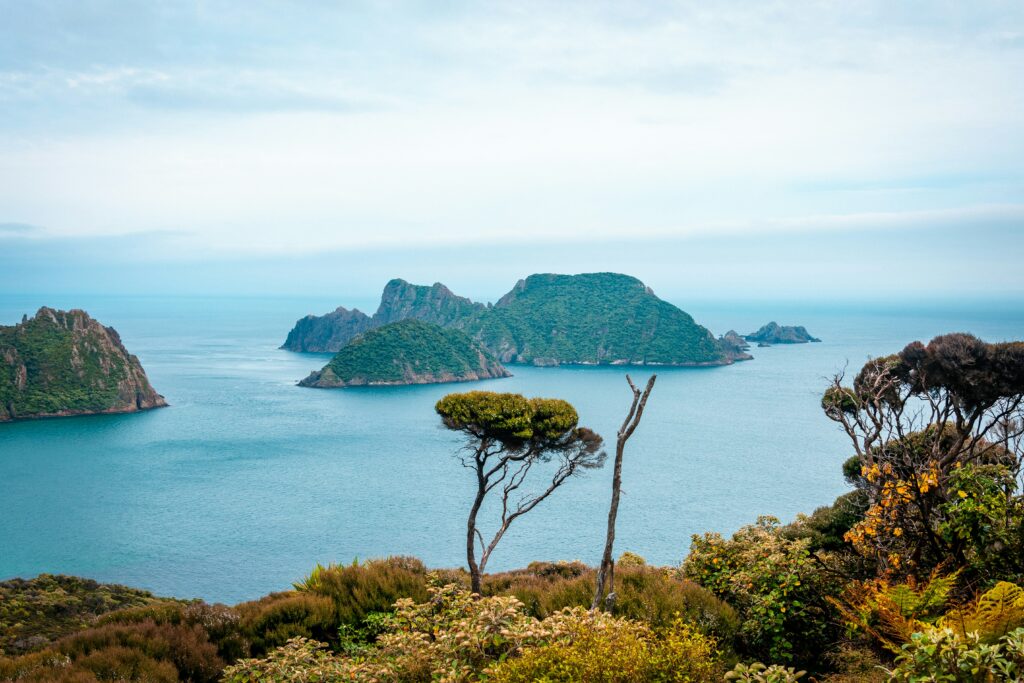
Cruising Fiordland National Park
Cruising Fiordland National Park
Overview
Cruising Only, Subject to Weather
New Zealand’s Fiordland National Park is the largest of the country’s 14 national parks, at 4,868 sq. mi./12,607 sq. km. Located on the southwest corner of the South Island, it was founded in 1904, to protect the natural environment for nature lovers and trekkers. It comprises a large portion of the Te Wahipounamu UNESCO World Heritage Site. The key features of the park are the mountain ranges of the Southern Alps, which rise to heights from 1,500 m/4,900 ft to over 2,500 m/8,200 ft., as well as the spectacular U-shaped glaciated fjord valleys that cut into the mountains as deeply as 25 miles from the sea. There are three major fjords that are navigable by your ships, Milford Sound, Doubtful Sound and Dusky Sound. Your exact itinerary will be determined by your captain depending on the weather and other conditions on the day. But whatever course you sail, you will be treated to spectacular waterways curving between sheer cliffs towering thousands of feet above the mirrored surface of the fjord. Depending on recent rainfall, waterfalls tumble down the rock faces from above. Many of the peaks have nicknames based on their resemblance to animals or other objects of previous observers’ imaginations. You are also likely to see seals, birds including fiordland penguins, bottlenose dolphins and possibly such other fauna as red deer or whales.

Day at Sea
Day at Sea
Overview
International Waters

Nelson, New Zealand
Nelson, New Zealand
Overview
Arrival 08:00 / Departure 17:00
Located on the northwest end of the South Island, Nelson enjoys the sunniest weather in New Zealand, giving it the dual nicknames “Sunny Nelson” and “Top of the South.” The city is the oldest on South Island, and the second-oldest in New Zealand, having been founded in 1841 as a speculative endeavor by a development company, which purchased land from the Maori inhabitants. The scheme did not thrive, because the arable land was too limited by mountain ranges on three sides and the Tasman Bay on the fourth. Today, however, Nelson is the biggest fishing port in the Australasian region. The town is also a renowned center for creative types including artists and artisans. It holds an annual Festival of Wearable Art and a permanent museum is dedicated to the entries and to collectible cars. The abundant sunlight helps ripen the sauvignon blanc grapes that have made the nearby Marlborough region a global wine mecca. To the west, the Abel Tasman National Park offers outdoor action, while to the east a bit, Havelock is the self-proclaimed “Greenlip Mussel Capital of the World!” The surrounding mountains are honeycombed with caverns, including some of the world’s most extensive explored caverns.
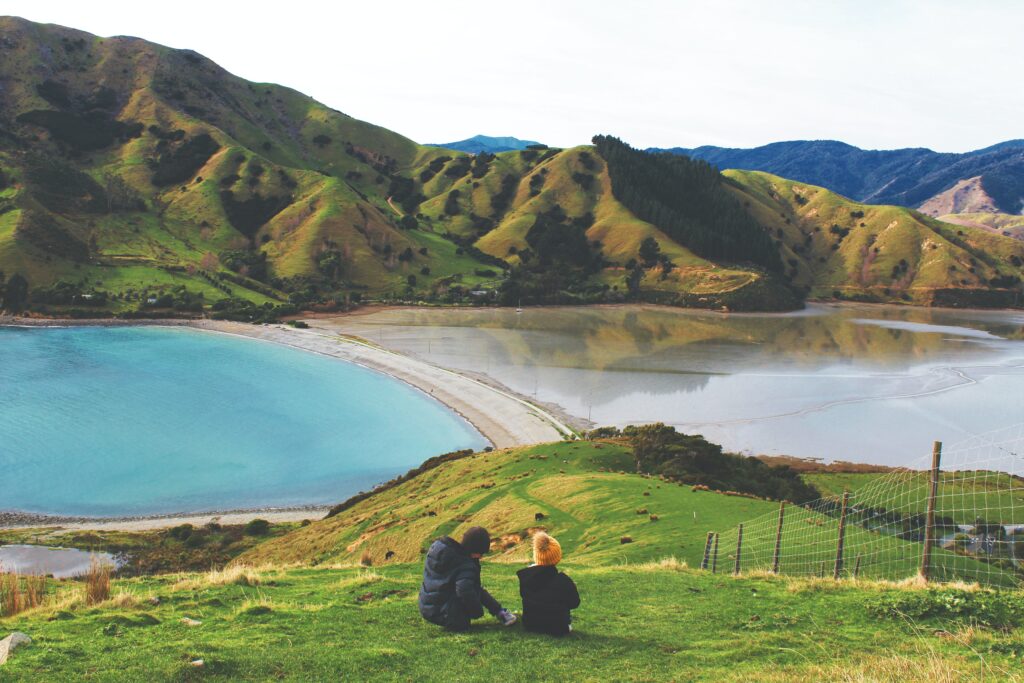
Day at Sea
Day at Sea
Overview
International Waters

Sydney, Australia
Sydney, Australia
Overview
Arrival 07:00 / Departure 16:00 (Overnight)
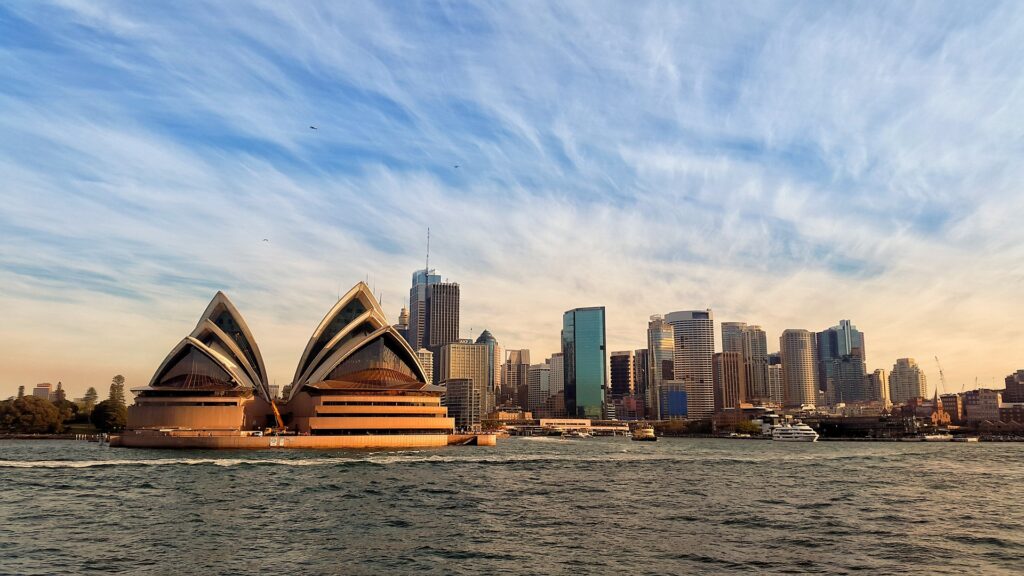
Day at Sea
Day at Sea
Overview
International Waters

Melbourne, Australia
Melbourne, Australia
Overview
Arrival 12:00 / Departure 18:00 (Overnight)
Nestled in the heart of Victoria, Australia, Melbourne Cruise Port offers an exceptional experience for discerning travelers in search of pure luxury. Hailed as Australia's cultural capital, Melbourne emanates a unique charm with its eclectic mix of art, fashion, and gastronomy. The city’s vibrant center is always alive with events, top-tier dining, and exclusive shopping experiences. It's a melting pot of cultures and a haven for gourmands, offering excellent food everywhere—from modern Australian cuisine to delightful Asian fusion fare and cozy cafes serving the finest coffee you've ever tasted. Whether you’re lingering in the city’s labyrinth of laneways covered in awe-inspiring street art, or sampling gourmet local cuisine along the Yarra River, every moment in Melbourne is a moment of delight.
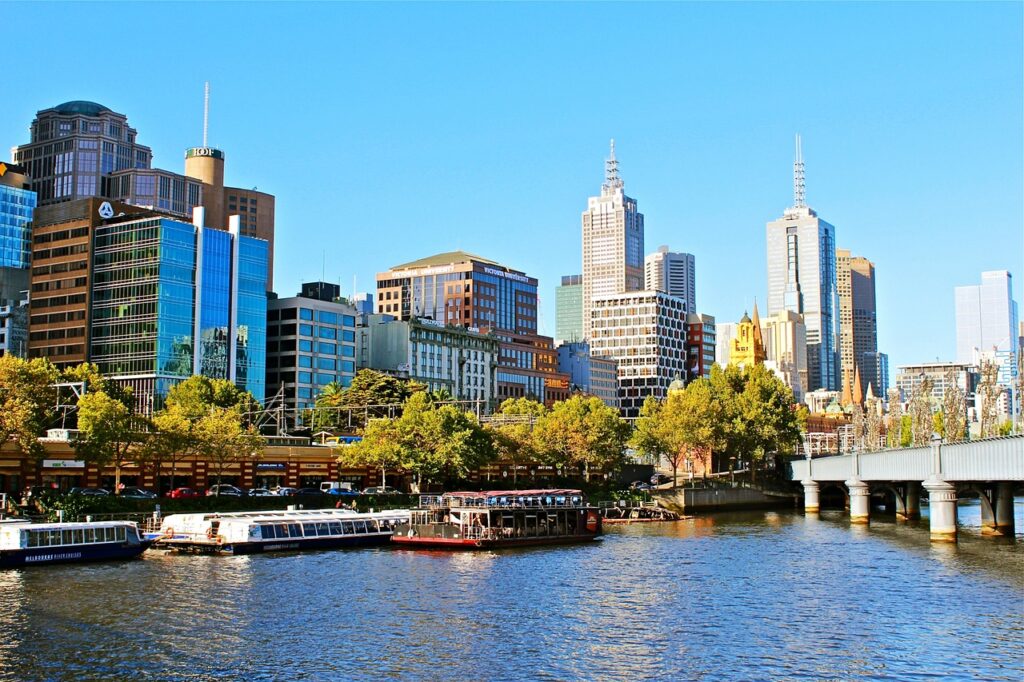
Day at Sea
Day at Sea
Overview
International Waters

Hobart, Tasmania
Hobart, Tasmania
Overview
Arrival 08:00 / Departure 22:00
Home to nearly half of Tasmania's residents, Hobart somehow still exudes an exclusive ambiance with its seamless fusion of cultural allure and natural splendor. Nature seems to concur, as it's one of the very few major cities where the southern lights, the mesmerizing aurora australis, are known to grace the skies. The nearby Tasmanian wilderness extends a heartfelt invitation to embrace pristine beauty through captivating wildlife encounters, tranquil rainforest hikes, and awe-inspiring coastal cruises. For those in search of a genuine connection with nature, Hobart offers a treasure trove of unforgettable moments. Hobart provides the perfect haven to immerse oneself in an authentic Australian experience. As the gateway to Tasmania's renowned vineyards, culinary enthusiasts are treated to a sensory journey, from farm-to-table dining to savoring the finest wines.

Day at Sea
Day at Sea
Overview
International Waters

Portland, Victoria, Australia
Portland, Victoria, Australia
Overview
Arrival 10:00 / Departure 18:00
Steeped in heritage and surrounded by breathtaking landscapes, this charming coastal town offers an unparalleled mix of nature, history, and maritime allure. From the playful antics of migrating Southern Right Whales and Humpback Whales to the art installations and sculptures that line the picturesque foreshore, Portland is a uniquely vibrant escape.
The bygone days of Victoria's First European Settlement are immaculately preserved in its architectural gems, like the Georgian-style cottages and sandstone facades that grace its charming streets. History buffs and cultural enthusiasts alike find the Maritime Discovery Centre perfectly showcases the town's maritime legacy, spotlighting its pivotal role in shaping Australia's growth.
The natural beauty of Portland's coastline is a spectacle in itself. The rugged grandeur is best experienced at Cape Nelson State Park, where you'll be awestruck by dramatic cliffs, secluded coves, and scenic trails that unveil sweeping vistas of the Southern Ocean.

Robe, Australia
Robe, Australia
Overview
Arrival 08:00 / Departure 18:00
Delve into the stories of its First Nations heritage and marvel at the ancient rock art found throughout Talbot Bay, where extreme natural wonders await exploration. Explore its rocky shores and steep cliffs, comprised of deformed quartz sandstones blended with volcanic rock. Or investigate the diverse seabeds, which can dramatically transform from 100-foot deep channels to exposed rock formations. Water enthusiasts will also want to explore Turtle Reef, named over its abundance of turtles on the reef, and home to coral reef and crocodiles. The pinnacle of this great region is the iconic Horizontal Falls, a jaw-dropping natural wonder, hailed by Sir David Attenborough as 'Australia's most unusual natural feature.” The effect of the waterfalls is created by the rapid tidal fall on the ocean-side of gaps in the sandstone cliffs. Waters on the inland side of the gaps cannot escape fast enough, resulting in a “horizontal waterfall” created by the cascades, with water levels differing sometimes by several meters on either side of the gaps.
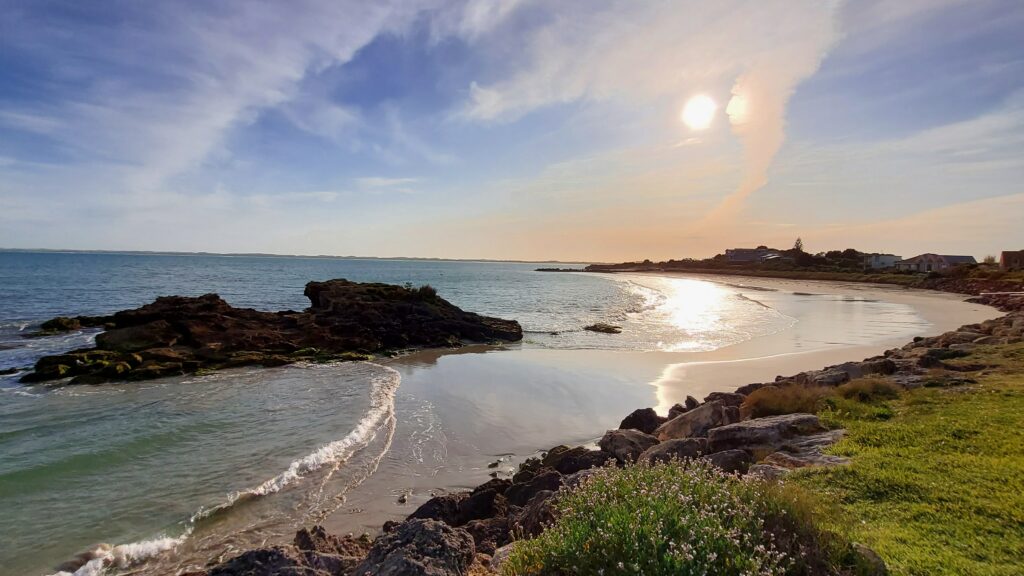
Penneshaw, Kangaroo Island, Australia
Penneshaw, Kangaroo Island, Australia
Overview
Arrival 07:00 / Departure 18:00
Nestled upon the picturesque Dudley Peninsula, Penneshaw stands as Kangaroo Island's second-largest town and gateway to a wildlife realm renowned for its colony of adorable and diminutive Little Blue Penguins. Follow the road less traveled and discover unique wildlife, mouth-watering food and wine, breathtaking scenery and a laid-back lifestyle. For those yearning for tranquility and rejuvenation, you’re welcome to lose yourself in the island's peaceful embrace. Immaculate beaches and nature preserves invite you to take leisurely strolls along their shores, while crystal-clear waters tempt you with opportunities for a refreshing swim or relaxed snorkeling. Kangaroo Island's pristine environment beckons you to unwind, revitalize, and reconnect with nature in unparalleled seclusion.
Tender required.
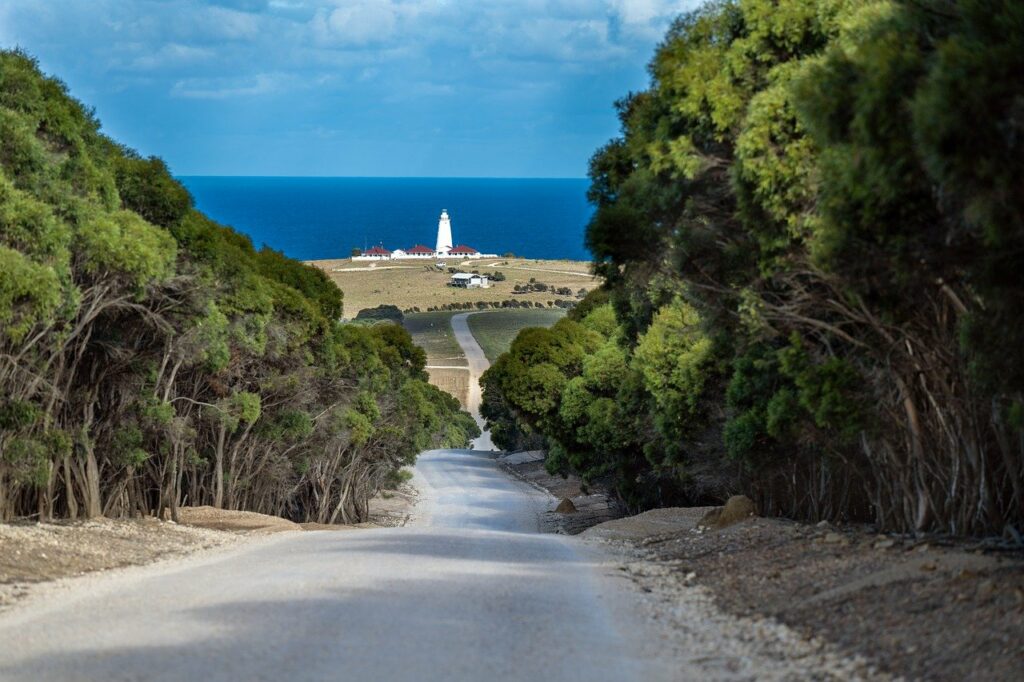
Adelaide, Australia
Adelaide, Australia
Overview
Arrival 07:00 / Departure 17:00
From the moment you step ashore, Adelaide welcomes you to a blend of sophistication and adventure. Famously known as the '20-Minute City', Adelaide’s unique approach to urban planning allows visitors to reach various cultural hubs within a short 20-minute drive, creating a highly accessible and convenient urban experience. Boasting a timeless blend of cosmopolitan charm and untouched natural beauty, this destination’s sandy beaches, rolling vineyards, and vibrant cultural scene pack a plethora of experiences into this small area. Immerse yourself in the opulent wine country of Barossa Valley, where world-class vineyards invite you to savor exquisite vintages and gourmet cuisine, or fragrant paradise that lies behind the walls of the Adelaide botanical gardens.
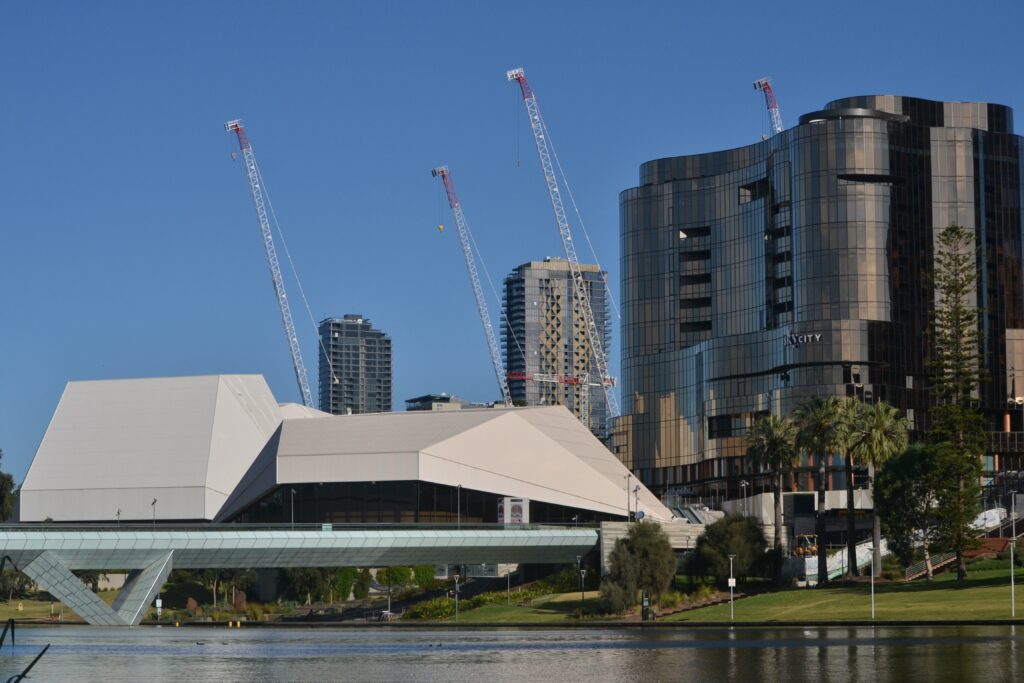
Day at Sea
Day at Sea
Overview
International Waters

Bussleton, Australia
Bussleton, Australia
Overview
Arrival 07:00 / Departure 18:00
Situated along the pristine shores of Geographe Bay, Busselton is not just a destination; it's an experience.
The town's crowning jewel is the iconic Busselton Jetty, which stretches for an impressive 1.8 kilometers into the azure waters of the bay. A leisurely stroll along the jetty offers breathtaking views of the bay and is a delightful way to take in the ocean air. For a unique experience, hop on the charming Jetty Train to the jetty's end, where you can explore the Underwater Observatory and witness the vibrant marine life that thrives beneath the waves.
For nature and history lovers, the Busselton region is a portal to worlds that beg to be explored. Meander back in time through the lush Tuart Forest National Park, with its ancient and majestic tuart trees. Or traverse the underground secrets of the famous Ngilgi Cave. Delicate formations, hidden chambers, and a rich Aboriginal history come to life as you explore within.
Tender required.
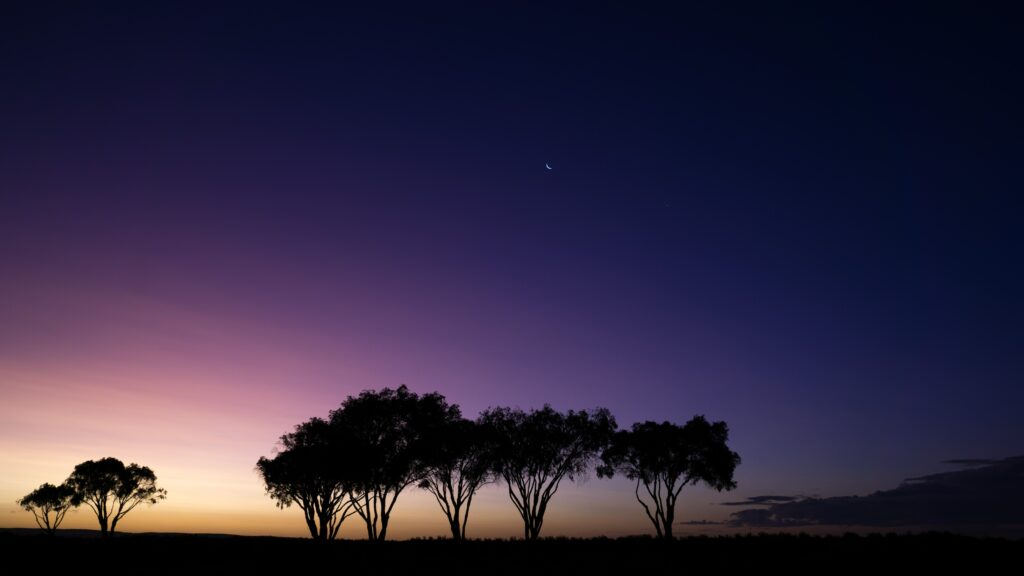
Freemantle (Perth), Australia
Freemantle (Perth), Australia
Overview
Arrival 07:00 / Departure 18:00
Affectionately known as 'Freo,' Fremantle offers a wealth of Western Australian culture and surprising experiences. Stroll along bohemian streets lined with meticulously preserved 19th-century architecture and hunt for treasures in the bustling Fremantle Markets, housed in a historic Victorian-era building, tantalizing the senses with local crafts, delectable cuisine, and unique finds.
Adventure beckons visitors from every corner of this region. Catch a short ferry ride to the unique nature reserve of Rottnest Island and make friends with the darling quokkas that call it home. Indulge in a scenic visit to the Swan Valley, Western Australia's wine region, rich with vineyards, wine tastings, and gourmet delights.
Whether you choose to people watch over fresh fish and chips at Fremantle Fishing Boat Harbour or immerse yourself in indigenous culture at the Western Australian Maritime Museum, Fremantle offers a diverse look at the captivating facets of Australia's west coast.
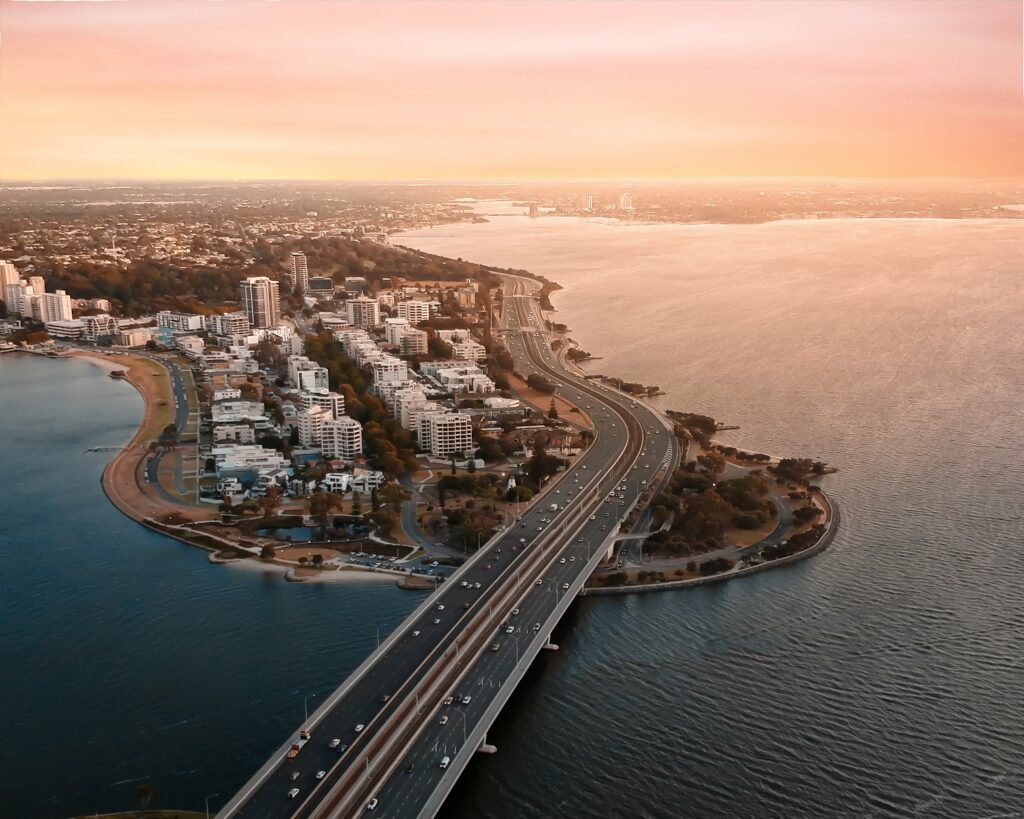
Day at Sea
Day at Sea
Overview
International Waters

Broome, Australia
Broome, Australia
Overview
Arrival 09:00 / Departure 22:00
Perched on the Northwest edge of Western Australia, Broome was once an isolated gem, reachable only by a rugged dirt road until the mid-1980s. The town is nestled on a narrow peninsula, encircled by the crystal-clear sapphire waters of the Indian Ocean and the tranquil expanse of Roebuck Bay. It stands as a global haven for migratory birds, offering them a scenic stopover on their long journeys.
Broome sprang to life following the discovery of the world's most abundant pearl shell deposit. This revelation sparked a frenzy akin to a gold rush, drawing in hundreds of people lured by the promise of precious treasures. Despite a downturn in the pearl industry during the last century, the allure of Broome's natural splendor and serene ambiance held many captives, anchoring them to this coastal sanctuary.
Today, Broome boasts a unique architectural landscape, a testament to its diverse history. A blend of colonial buildings, old mission houses, churches, and the huts of former pearling masters share the streets with more modern homes. These structures collectively echo a distinctive style that took root over eighty years ago.

Day at Sea
Day at Sea
Overview
International Waters

Kuri Bay, Australia
Kuri Bay, Australia
Overview
Arrival 08:00 / Departure 17:00
Kuri Bay, situated on the remote northwestern coast of Western Australia, is a place of pristine and untouched wilderness. This secluded bay is renowned for its rugged, untouched beauty, where ancient red cliffs meet the turquoise waters of the Indian Ocean. The bay's waters are rich in pearls, earning it a unique place in the world as a hub for the South Sea pearl industry. Its pearling history dates back to the late 19th century; today it is a remote outpost that offers a glimpse into this lustrous past, with the spectacular Kimberley region as its backdrop.
Tender required.
Cruising Only
Cruising Only
Overview

Darwin, Australia
Darwin, Australia
Overview
Arrival 08:00 / Departure 17:00
Darwin, Australia, is a captivating coastal city that beckons with its tropical allure and rich cultural tapestry. Nestled in the rugged embrace of the Northern Territory's Top End, this city boasts a vibrant multicultural community, where Indigenous heritage blends seamlessly with the influence of diverse international populations.
Darwin's unique climate oscillates between a balmy dry season, ideal for outdoor adventures, and a dramatic wet season, bringing life-giving rains and electric storms. Its stunning natural surroundings, including nearby national parks and pristine beaches, provide a playground for nature enthusiasts and adventure seekers. With a fascinating history marked by World War II significance and a modern outlook that embraces art, cuisine, and festivals, Darwin stands as a gateway to both timeless wonders and contemporary experiences in Australia's far north.
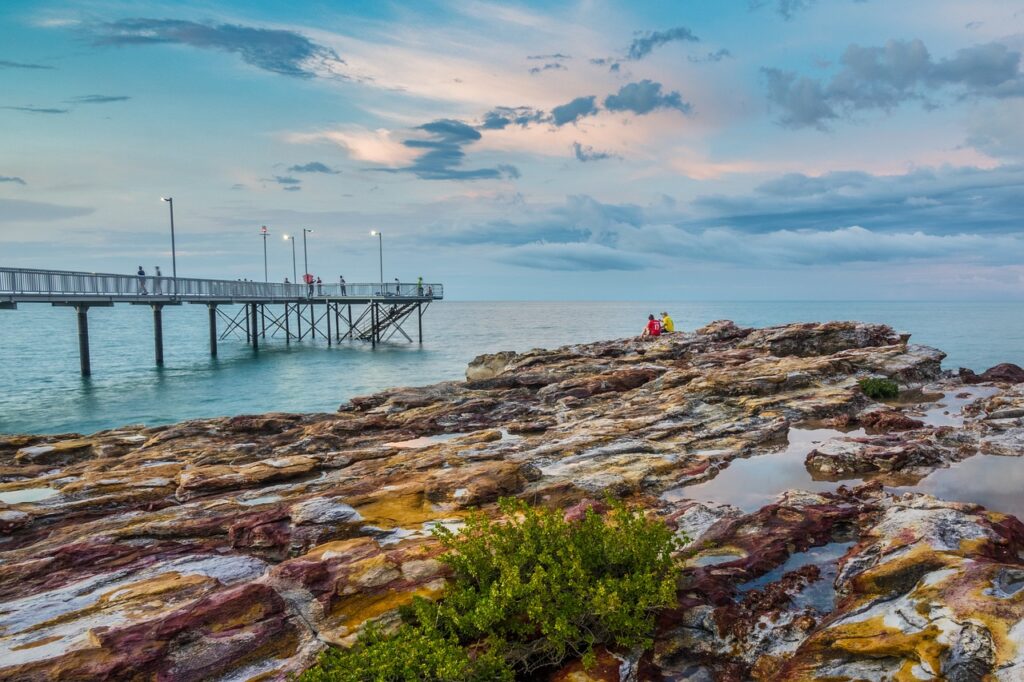
Day at Sea
Day at Sea
Overview
International Waters

Lembar, Lombok, Indonesia
Lembar, Lombok, Indonesia
Overview
Arrival 12:00 / Departure 22:00
This hidden gem, while only 35 kilometers (22 miles) from Bali, feels worlds away from some of the more widely traveled ports of Indonesia. Its untouched natural beauty, unique cultural treasures, and serene ambiance call to those who want a more authentic, off-the-beaten-path experience. Visitors can immerse themselves in the local way of life within the traditional villages of the Sasak people, known for their unique art and music. Here, ancient customs thrive, and warm, welcoming smiles accompany your every step. Nature lovers and wildlife enthusiasts may prefer to search for glimpses of unique birdlife and monkeys that live along the trails of Mount Rinjani, the second-largest active volcano in Indonesia. Time on this island seems to slow down, allowing you to savor life's simple pleasures and reconnect with the beauty of the natural world.
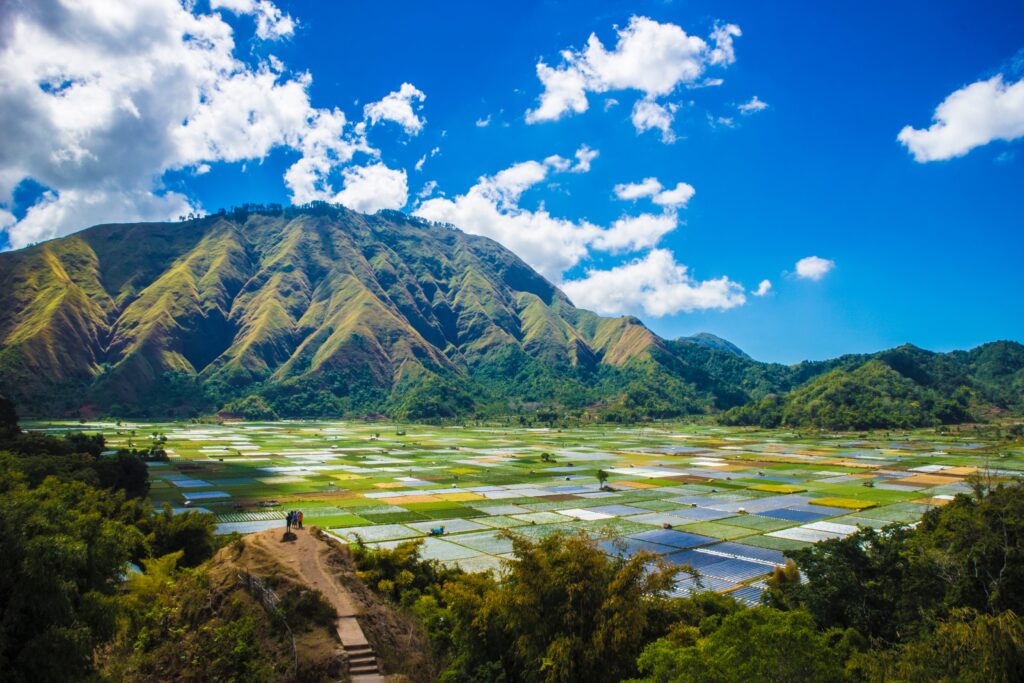
Bali, Indonesia
Bali, Indonesia
Overview
Arrival 07:00 / Departure 22:00
Located on the southeastern coast of Bali is the small village of Tanjung Benoa. Still considered a fishing village, Benoa has developed over the past 20 years into a major player in the tourism sector. The calm waters and the beautiful white sand beaches have made Benoa the prime water sport area of Bali. Being a peninsula that is only accessible from one direction, Tanjung Benoa is still relatively quiet with a more relaxed feeling.

Day at Sea
Day at Sea
Overview
International Waters

Komodo Island, Indonesia
Komodo Island, Indonesia
Overview
Arrival 07:00 / Departure 16:00
This island national park isn’t the only place the large (up to 10-foot) monitor lizards known as “Komodo Dragons” live. But they are protected here, and flourish as they have in the region for millions of years. Follow your guide and listen carefully to his instructions, because despite their torpid appearance, these giants can really move when they want to, and they apparently aren’t picky about what sort of prey they pursue.
Optional Seabourn shore excursion or Ventures by Seabourn access only; wheelchair access limited. If not participating in one of these options, no port access will be available.
Tender required.
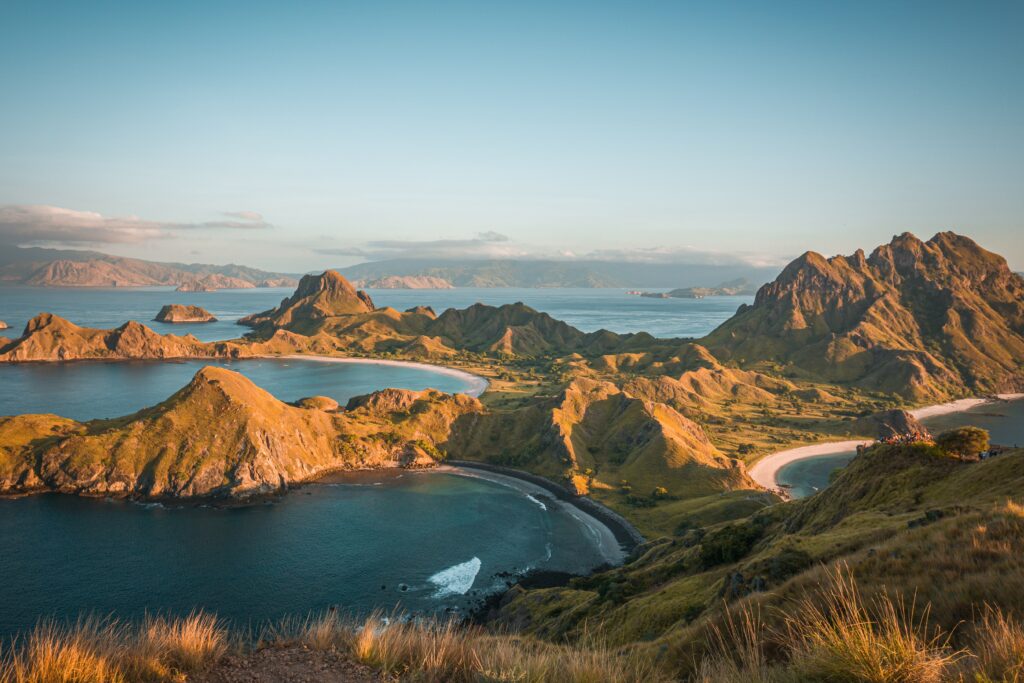
Ujung Padang, Sulawasi, Indonesia
Ujung Padang, Sulawasi, Indonesia
Overview
Arrival 12:00 / Departure 20:00
The modern name for Ujung Pandang is Makassar. It is the Sulawesi capital and the island’s largest city. Its location on the Strait that bears its name has been its fortune, or misfortune, depending on your point of view. It has had a contentious relationship with potential and actual colonizers, drawn by the lucrative multi-continental spice trade that passes through the Strait. It was Dutch colony after the 17th century, and the Dutch Fort Rotterdam is a local landmark. This is a good place to see the distinctive high-prowed Bugis schooners that continue to trade throughout the islands of Indonesian Archipelago.
Day at Sea
Day at Sea
Overview
International Waters

Puerto Princesa, Philippines
Puerto Princesa, Philippines
Overview
Arrival 07:00 / Departure 16:00
Ensconced in the paradise of Palawan, a sliver of an island teeming with exotic wildlife, and quaint fishing villages, Puerto Princesa’s pristine beaches, lush jungles, and crystal-clear waters offer tropical escape like no other. The charm of this serene coastal town is flavored with the influences from the Philippines' rich culture. Every day beckons with freshly caught seafood, tropical fruits, and authentic Filipino delicacies, all prepared with the warm hospitality of the locals. Here the luxury of nature’s splendor abounds, above and below the surface. The awe-inspiring Puerto-Princesa Subterranean River National Park, a UNESCO World Heritage site, takes visitors on a mesmerizing subterranean exploration through the ethereal beauty of limestone caves, adorned with mesmerizing stalactites and stalagmites. Puerto Princesa also boasts a commitment to sustainable tourism, ensuring that its pristine environment remains untouched for generations to come. This dedication to eco-friendly practices aligns perfectly with a conscientious traveler's desire to preserve the beauty of the world's most enchanting destinations.
Day at Sea
Day at Sea
Overview
International Waters

Hong Kong
Hong Kong
Overview
Arrival 10:00 / Departure 23:00 (Overnight)
Hong Kong is divided into four sections: Hong Kong Island, Kowloon, the New Territories, and the numerous outlying islands. One hundred sixty-four square miles of dense real estate dominate Hong Kong Island, including enormous skyscrapers with futuristic architecture, opulent hotels, residential compounds on Victoria Peak, and some of the oldest Chinese communities in the region. All these elements create one of the most exotic and exciting ports of call in the world; one that is universally loved by tourists and its own enterprising citizens.
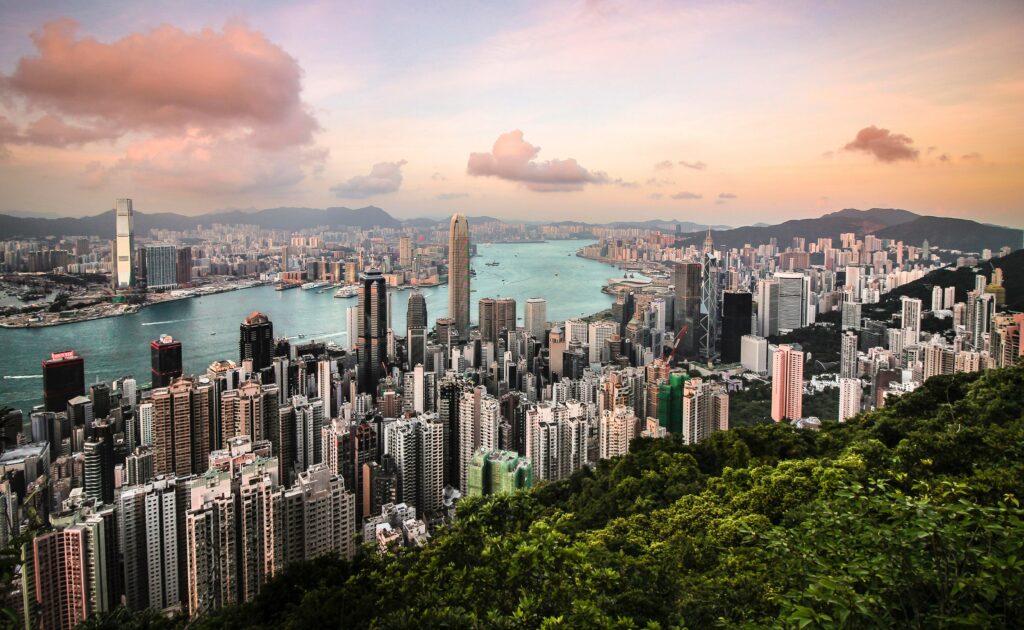
Day at Sea
Day at Sea
Overview
International Waters

Kaohsiung, Taiwan
Kaohsiung, Taiwan
Overview
Arrival 07:00 / Departure 16:00
Taiwan’s second-largest city, Kaohsiung is a growing, fascinating, cultural hub featuring a unique blend of tradition, natural beauty, and modernity. The city's modern skyline captivates with architectural wonders like the 85 Sky Tower, offering panoramic views of Kaohsiung's bustling harbor and the sprawling city below. Art enthusiasts can lose themselves in the contemporary treasures of the Kaohsiung Museum of Fine Arts and the Pier-2 Art Center, where creativity knows no bounds. Additionally, the lively Liuhe Night Market is a must-visit for those seeking delectable street food, vibrant night bazaars, and a taste of local culture. Beyond its urban modern core lie many opportunities to explore important Taiwanese historical sites such as the Chikan Towers, a gorgeous center of Confucian learning surrounded by a dazzling maze of koi ponds, or the colorful Dragon and Tiger Pagodas, with their vibrant exteriors and elaborate interior walls.
Hualien, Taiwan
Hualien, Taiwan
Overview
Arrival 09:00 / Departure 18:00
Often known as the gateway to the breathtaking Taroko Gorge, Hualien’s glistening lakes, pristine beaches, epic hiking trails, picturesque rice terraces, and vibrant night markets have a presence all their own.
With a history that weaves together Dutch, Spanish, Chinese, and Japanese influences over the past 400 years, Hualien's cultural tapestry tells a collection of fascinating stories at every turn. Many visitors flock to the Pine Garden, once a Japanese military outpost, where ancient pine trees loom over a lush forest floor adorned with native flora like macaranga, ferns, and silver grass. Step with quiet contemplation through the vibrant and colorful temples that grace this region with their intricate structures and serene gardens.
Ishigaki Island, Japan
Ishigaki Island, Japan
Overview
Arrival 08:00 / Departure 17:00
Closer to Taiwan than to Japan’s main islands, the Yaeyama group is a volcanic archipelago known (though not widely) for its coral reefs and clear waters. Ishigaki is the main hub, and attracts mostly Japanese visitors with inside information about the Caribbean-like appeal of the place. A part of the Okinawa Prefecture, the island is ringed by beaches that vary from sandy expanses to whole strands made up entirely of broken, bleached and tumbled coral. The land itself is mostly given over to palm forests and pineapple plantations. Capes such as Hirakubozaki on the west side, or Uganzaki at the northern tip, are marked by lighthouses and offer nice views. At Kabira Bay no swimming is allowed, due to culture of black pearls, but glass-bottom boats offer views of the colorful sea life. Other beaches welcome snorkelers, swimmers and windsurfers.
Cruising Only
Cruising Only
Overview
The Sea of Japan is a marginal sea set off from the Pacific Ocean by the Japanese Archipelago, the Korean Peninsula, the Sakhalin Islands, and Russia. Due to its inclusion by these land masses, it has practically no tide changes. Very few rivers empty into it, and their water amounts to less than one percent of the sea’s content. The sea’s salinity is less than the adjacent Pacific as well. In the geologic past, the Sea of Japan was a landlocked body of water. The Sea of Japan has no large islands, bays or capes.

Amami (Naze), Amami Oshima, Japan
Amami (Naze), Amami Oshima, Japan
Overview
Arrival 07:00 / Departure 15:00
Amami Oshima is the ideal escape for travelers seeking authentic experiences away from the crowds of traditional tourist destinations. This subtropical paradise presents travelers with the perfect opportunity for relaxation on diverse and pristine beaches, as well as exploration of enchanting mangrove forests. As the gateway to the largest of the Amami Islands, Amami showcases a unique blend of cultures, with a heritage that fuses mainland Japanese traditions and the influences of Okinawa's Ryukyu Kingdom. Visitors can savor the island's traditional cuisine, featuring fresh seafood and unique flavors, such as Umibudo (sea grapes) and the regional specialty, keihan. Nature enthusiasts will be captivated by the island's rich biodiversity, including the endangered Amami rabbit, found nowhere else, and numerous rare and endemic bird species. Birdwatchers and wildlife lovers will find plenty to marvel at on this unspoiled island.
Takamatsu, Japan
Takamatsu, Japan
Overview
Arrival 08:00 / Departure 17:00
Takamatsu is located on Shikoku, the smallest of Japan’s four main islands, in the Kagawa Prefecture on the Seto Inland Sea. During the Edo period, it was famous for its seaside castle, one of the few with a moat utilizing seawater. The castle was destroyed during the Meiji period, and today the so-called Sunport waterfront project has substituted the Symbol Tower, Takamatsu’s tallest building, for the castle tower that once graced its flag. Long an important port for Japan, Takamatsu was nearly destroyed in 1945 by Allied incendiary bombing. A portion of the famous castle, including foundations and part of the wall, still strand on the city-center park, and there are plans to reconstruct more of it. The Ritsurin Koen garden, first built in the Edo period, survives, and makes a welcome oasis in the city, with a folk museum, rest houses and a tranquil tearoom among lakes, hills and groves of cherry trees that bloom in the spring and flame into color in the autumn. The Shikoku Mura is an open-air museum with traditional buildings gathered from all over Shikoku on display. The Yashima area boasts an Isamu Noguchi Museum dedicated to the late designer, artist and sculptor, with several traditional buildings he relocated and used as work spaces and galleries, along with many finished and unfinished sculptures. There is also a lovely Yashima Temple halfway up the mountain, and at the top, an observation deck with breathtaking views of the city and port.
Beppu, Japan
Beppu, Japan
Overview
Arrival 08:00 / Departure 14:00
Takamatsu is located on Shikoku, the smallest of Japan’s four main islands, in the Kagawa Prefecture on the Seto Inland Sea. During the Edo period, it was famous for its seaside castle, one of the few with a moat utilizing seawater. The castle was destroyed during the Meiji period, and today the so-called Sunport waterfront project has substituted the Symbol Tower, Takamatsu’s tallest building, for the castle tower that once graced its flag. Long an important port for Japan, Takamatsu was nearly destroyed in 1945 by Allied incendiary bombing. A portion of the famous castle, including foundations and part of the wall, still strand on the city-center park, and there are plans to reconstruct more of it. The Ritsurin Koen garden, first built in the Edo period, survives, and makes a welcome oasis in the city, with a folk museum, rest houses and a tranquil tearoom among lakes, hills and groves of cherry trees that bloom in the spring and flame into color in the autumn. The Shikoku Mura is an open-air museum with traditional buildings gathered from all over Shikoku on display. The Yashima area boasts an Isamu Noguchi Museum dedicated to the late designer, artist and sculptor, with several traditional buildings he relocated and used as work spaces and galleries, along with many finished and unfinished sculptures. There is also a lovely Yashima Temple halfway up the mountain, and at the top, an observation deck with breathtaking views of the city and port.
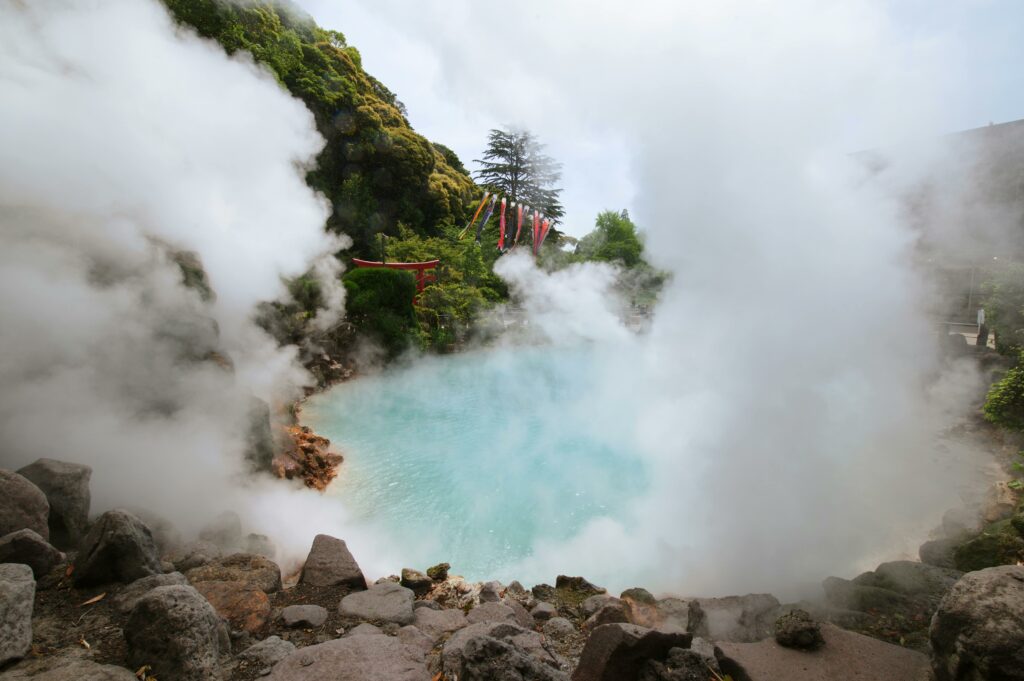
Sea of Japan
Sea of Japan
Overview
Cruising Only
The Sea of Japan is a marginal sea set off from the Pacific Ocean by the Japanese Archipelago, the Korean Peninsula, the Sakhalin Islands, and Russia. Due to its inclusion by these land masses, it has practically no tide changes. Very few rivers empty into it, and their water amounts to less than one percent of the sea’s content. The sea’s salinity is less than the adjacent Pacific as well. In the geologic past, the Sea of Japan was a landlocked body of water. The Sea of Japan has no large islands, bays or capes.

Scenic Cruising Kanmon Strait
Scenic Cruising Kanmon Strait
Overview
Kanmon Straits is a narrow channel of water that separates Honshu and Kyushu, two of Japan's main islands, while connecting the Sea of Japan with the Inland Sea. The strait has long played an important role in Japanese maritime history; the Shimonoseki Campaign — a series of military engagements with the U.S. and other navies that took place here in the 1860s — ended Japanese feudal rule over the region, thus opening Japan to the West and transforming it into an international trading hub. Twin 19th-centry lighthouses mark the port cities that face each other across the channel: Moji, Kyushu and Shimoneseki on Honshu, where you can still see cannons used during the naval campaign. Some 700 ships pass through Kanmon Straits on a daily basis; underground tunnels allow both cars and pedestrians to walk between the two ports. Japan’s largest fireworks display takes place over the strait every August, drawing more than a million sky gazers to watch the spectacular.

Busan (Pusan), South Korea
Busan (Pusan), South Korea
Overview
Arrival 07:00 / Departure 17:00 (Overnight)
Home to approximately 3.4 million people, Busan is a fast-moving coastal metropolis that guarantees you’ll never have the same experience twice. History enthusiasts will find themselves captivated by the stunning historical treasures of Beomeosa Temple, a serene oasis nestled within the city, with a rich heritage that dates back over 1,300 years. No trip is complete without strolling through Yongdusan Park to take in panoramic views while marveling at the iconic Busan Tower, a symbol of the city's aspirations and dynamism. Busan's culinary scene is a highlight of any visit. Savor the city's diverse gastronomy by exploring its bustling markets like Jagalchi Fish Market, where you can feast on freshly caught seafood, and indulge in delectable Korean street food. The city's natural beauty is another compelling reason to visit, with its pristine beaches like Haeundae Beach offering a tranquil escape by the sea. For those seeking a glimpse of Busan's ecological diversity, Dongbaek Island's ecological park features coastal walks and panoramic ocean views. Whether you’re drawn to studying the city's past and or its constant evolution, this destination appeals to a wide range of interests and tastes.
Day at Sea
Day at Sea
Overview
International Waters

Kanazawa, Japan
Kanazawa, Japan
Overview
Arrival 08:00 / Departure 18:00 (Overnight)
This splendid castle town, with over 400 years of history, beckons visitors to its unique time capsule of history and culture. As the seat of the Maeda Clan during the Edo Period, it rivaled Kyoto and Edo (Tokyo) in cultural achievements, making it a city with a rich legacy. Remarkably, Kanazawa largely escaped the destruction of World War Two, preserving its Nagamachi samurai district and chaya entertainment districts in impressive condition.
Today, visitors pour over the detailed designs of meticulously restored residences and districts, harmoniously coexisting with modern architecture. However, the city's crowning jewel is Kenrokuen Garden, often regarded as Japan's most beautiful landscape garden. Its name “Garden of the Six Sublimities', refers to the six essential attributes that make up a perfect garden. Enjoy a tranquil walk through grounds teeming with water features, bridges, teahouses, trees, flowers, stones, viewpoints and hidden nooks.
Kanazawa's culinary scene is a fascinating blend of regional flavors and international fusion. From elegant multi-course meals to comforting one-plate dishes, Kanazawa's diverse culinary offerings cater to even the most discerning palates, promising an unforgettable journey for food enthusiasts.

Day at Sea
Day at Sea
Overview
International Waters

Aomori, Japan
Aomori, Japan
Overview
Arrival 08:00 / Departure 18:00
Celebration is a way of life in this iconic city, brilliantly showcased during the menagerie and elaborate annual festivals that honor every aspect of the life and nature that flow through the streets. The city comes alive at night during the Nebuta Festival; towering Nebuta lantern floats transform the streets, unveiling Aomori's rich cultural heritage in a mesmerizing display of art and tradition. Yet, what truly sets Aomori apart is its seamless blend of culture and nature. While the festivities paint the night, this city invites you to explore serene lakes, verdant forests, and the iconic Hirosaki Castle during the day, creating an irresistible destination that seamlessly combines cultural immersion and scenic wonder.
Miyako, Japan
Miyako, Japan
Overview
Arrival 08:00 / Departure 18:00
Set along the east coast of the Iwate Prefecture, Miyako was Japan’s main seaport for hundreds of years before a series of tsunamis took their toll. Yet what the city lacks in historical buildings, it more than makes up for in natural attractions such as Sanriku Fukkō National Park. Stretching some 110 miles along the coast, the park showcases amazing flora — including Japanese red pine and a virgin forest of Tabu trees — while a variety of seabirds find refuge along its cliffs and beaches. Birders also flock to nearby Sanganjima island, one of Japan’s main nesting grounds for Swinhoe's storm petrels. Spend the day relaxing on Jodogahama Beach, which ranks among Japan’s best, or head to Morioka — Iwate’s largest city — to visit the 17th-century Hachimangu Shrine and sample rice wine on a tour of Asabiraki Sake Brewery, which dates from 1871. Just north of the city lies Ryusendo Cave, a massive subterranean network of towering stalagmites and translucent lakes.
Day at Sea
Day at Sea
Overview
International Waters

Yokohama, Japan
Yokohama, Japan
Overview
Arrival 06:30 / Departure 18:00 (Overnight)
The port of Yokohama provides seamless access to Tokyo, Japan’s capital and the most populous city on earth. There is more than enough variety in Tokyo to occupy a lifetime. Peruse the historic and immaculate Imperial Palace and Gardens before hitching an enchanting rickshaw ride through the lanterns and statues of the Asakusa district and its Sensoji Temple. Roam the city on a scavenger hunt for architectural oddities such as the Skytree Tower and the Tokyo Dome entertainment complex. Ever the paradise of cultural contrasts, Tokyo offers both classical entertainment like traditional kabuki performances, or the astonishing quirkiness of the teenaged fashion, cosplay and anime-fans along Takeshita Dori in Shinjuku.
Hitachinaka, Japan
Hitachinaka, Japan
Overview
Arrival 09:00 / Departure 19:00
Get a glimpse of bygone Japan in the port city of Hitachinaka, located around 100 miles northeast of Tokyo on Honshu. Hitachi Seaside Park is considered one of the most beautiful places in the entire country, blanketed in millions of flowering plants; during late spring, the park is awash in a sea of vibrant blue nemophila blossoms. Follow the coast down to the 9th-century Oarai Isosaki Shrine; its revered Kamiiso-no-Torii gate is believed to be where the gods descended to earth. Ushiku Daibutsu, a 390-foot-high figure of Buddha, stands among the world’s tallest statues; step inside to view some 3,000 golden buddha statuettes. For a fabulous hike, head to the remote hill town of Daigo and Fukuroda Falls, a dramatic, four-step waterfall that plunges nearly 400 feet. Be sure to try Hitachinaka-style takoyaki (grilled octopus), then wash it down with some rice wine at one of more than 40 sake breweries in the Ibaraki Prefecture.
Day at Sea
Day at Sea
Overview
International Waters

Hakodate, Japan
Hakodate, Japan
Overview
Arrival 07:00 / Departure 17:00
This important port on Japan’s northern Hokkaido Island was the first to be opened to European and American trade. The result of this is a trove of Western-style buildings in the suburb of Motomachi that gives the impression of a movie set. The bell of the distinctive Haristo Greek Orthodox church is designated one of Japan’s official treasured “100 soundscapes.” Hokkaido is famous for its hot springs, much beloved by the Japanese. Yunokawa Hot Spring enjoys a commanding view of the sea, and its botanical garden is home to the Japanese macaques called “snow monkeys” because of their habit of soaking in the hot springs during the northern winter. Goryokaku is a 150-year old star fortress that holds the Magistrate’s Office, an excellent example of traditional Japanese architecture. Get a panoramic view from the observation platform atop the Goryokaku Tower.
Kushiro, Japan
Kushiro, Japan
Overview
Arrival 10:00 / Departure 18:00
Blessed by a protective range of mountains and a relatively warm ocean current, Kushiro gets less than a third of the winter snow of its Hokkaido neighbor Sapporo, and twice as much sunshine as the nearby Kuril Islands. Thus it is an important reliably ice-free port during the winter. Like all of Japan, it is riddled with semi-active geothermal features and occasionally rattled by tremors. Scenic Lake Akan is ringed by hot springs. It also has an Ainu Koten museum with a replica village and folklore performances of the indigenous Hokkaido people. The Japanese Crane Reserve is a good place to see breeding populations of these large and graceful birds, so respected by the Japanese. The city encompasses Japan’s largest wetland, and the Kushiro City Marsh Observatory has a boardwalk to see it, as well as the Fureai Horse Park which offers equestrian tours into the forest.
Day at Sea (Cross International Date Line)
Day at Sea (Cross International Date Line)
Overview
International Waters
The International Date Line is an imaginary line of navigation on the surface of the earth running between the North Pole and the South Pole to demarcate a change from one calendar day to another. It passes across the middle of the Pacific Ocean approximately along the 180th degree of longitude, but deviating at various points to include overlapping areas governed by some island groups and territories to maintain internal uniformity. It is located halfway around the globe from the Prime (Greenwich) Meridian at 0 degrees longitude. Traveling from east to west, the local time gains one hour (clock set back one hour) for each 15 degrees of longitude traveled. This would amount to 24 hours gained for one circumnavigation, unless the calendar date was changed one day forward upon crossing the halfway point. Likewise, when traveling west to east, the calendar date is changed one day backward when crossing the date line. Seabourn voyage itineraries are based upon days actually spent on board, and the dates are noted for convenience, including days lost or gained in crossing the International Date Line. Departure days and disembarkation days are always quoted in local time and date.

Kodiak, Alaska, USA
Kodiak, Alaska, USA
Overview
Arrival 08:00 / Departure 17:00
Kodiak ignites the senses. The crisp, salty air invigorates and emboldens you as you explore this remote island. Your eyes will widen as you encounter impressive and elusive wildlife. The warm aroma of coffee teases out of charming cafes inviting you to savor the moment. Escape to the ultimate frontier found on this tiny island, named for the extraordinary bears that call it home. Two-thirds of Kodiak is covered by a national wildlife refuge, with many opportunities to view birdlife and marine animals. Kodiak’s history is deeply intertwined with the sea and the misty beaches that frame its shoreline. Explore the Kodiak Maritime Museum to uncover the island's seafaring heritage, from its early Russian explorers to the resilient fishing communities that have shaped its identity.
Day at Sea
Day at Sea
Overview
International Waters

Glacier Bay, Alaska
Glacier Bay, Alaska
Overview
Arrival 08:00 / Departure 16:00
Designated as an International World Heritage Site in 1992, Glacier Bay is also a National Monument, a National Park and a designated Biosphere Reserve. Over millennia, Glacier Bay has experienced many major advances of its glaciers. When first surveyed in 1794 by a team under the command of British captain George Vancouver on HMS Discovery, its vast glaciers extended well beyond present-day margins of the bay.
Temperate, coniferous rainforest dominates its southern shores. Black and brown bears, wolves, moose, eagles and ravens all go about their daily routines, while harbor seals and whales frolic within the bay waters.
Glacier Bay has two major arms, East and West, and over fifty named glaciers, some of which push forward at three to six feet per day. Combined with Wrangell St. Elias National Park and Canada’s Kluane National Park and Alsek-Tatshenshini Park, Glacier Bay encompasses the largest protected wilderness area on earth. This is a truly a place of awe-inspiring beauty and an icon of wild Alaska.
Sitka, Alaska
Sitka, Alaska
Overview
Arrival 08:00 / Departure 17:00
Story and soul await in the history and lush scenery of this remote city on Baranof Island. As the oldest city in Alaska, only accessible by air and sea, Sitka is the perfect place to relish in unbridled beauty of the Last Frontier. Nicknamed the 'Paris of the Pacific' for the growing wealth acquired during its logging, gold, and fur trade booms, Sitka was sold to the United States by Russia in 1867. Picturesque remnants of Russia’s architectural influence are still present; one of the most intriguing structures is the Cathedral of Saint Michael, built in 1848 to honor a Russian Orthodox bishop. The mix of Tlingit tradition runs heavily through Sitka’s streets as well, making for a unique blend of history and culture. From salmon fishing, hikes in the Tongass rainforest, exploring the coastline by private vessel, or even a round of golf in some of the toughest and most beautiful holes in all of Alaska… one visit to Sitka is never enough because of the infinite ways to connect with its culture, wildlife, and people.
Tender required.

Klawock, Alaska
Klawock, Alaska
Overview
Arrival 08:00 / Departure 17:00
The Tlingit village of Klawock sits midway along the western coast of Prince of Wales Island in Southeast Alaska, otherwise known as the state’s “panhandle.” Prince of Wales — call it “P.O.W.” — is the fourth largest island in the United States, a vast, wildlife-rich wilderness of more than 2,500 square miles; yet fewer than 6,000 people live there, around 800 of whom reside in Klawock. The village, site of Alaska’s first salmon cannery, is currently building its tourism industry, and the dramatic approach alone — sailing through one of two fjord entrances, with scenic views of jagged mountains and lush islands — makes Klawock a worthwhile destination. Visitors discover one of the state’s most impressive totem parks, its 21 masterfully carved poles standing atop a hill that overlooks the harbor. You can meet the carvers and watch them work at the carving shed in the park’s heritage center, which also features an authentic longhouse. Outdoor adventures include paddling a canoe along the rugged coast, hiking through old-growth forest, and fishing for king, sockeye and coho salmon.
Tender required.
Prince Rupert, British Columbia, Canada
Prince Rupert, British Columbia, Canada
Overview
Arrival 08:00 / Departure 17:00
Prince Rupert, set amongst the coastal mountains, is the jumping-off point for travelers joining the coastal ferries to Haida Gwaii, Vancouver or north to Alaska. Highlights include the quaint Cow Bay with its shops and restaurants, the Museum of Northern British Columbia, the totem carving house or the stunning sunken gardens.
Prince Rupert certainly has abundant wildlife. Whether you join a local boat for whale-watching, hike along the Butze Rapids or take a scenic flight, you are sure to be pleased. The region is home to the highest concentration of grizzly bears in North America. The Khutzeymateen Grizzly Bear Sanctuary, established in 1994, was the first area in Canada to be protected specifically for grizzlies and their habitat.
Founded in 1910, the town was named for Prince Rupert, who was a governor of the Hudson's Bay Company in 1670. Prince Rupert is the northern terminus of the Canadian National Railway and an important port for goods moving towards Alaska.
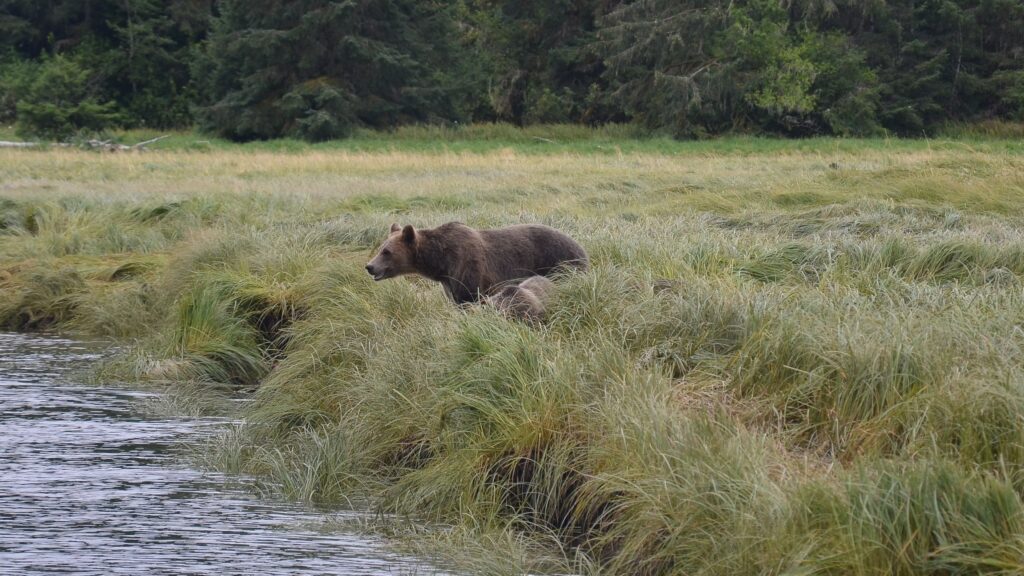
Inside Passage
Inside Passage
Overview
Cruising Only
The upper latitudes of North America’s Pacific Coast are blessed with a long strand of islands scattered just offshore of the mainland. These islands provide shelter from the swells generated across the expanse of the world’s largest ocean, and offer one of the most scenic passages for ships to be found anywhere on the globe. Stretching from Washington State’s Puget Sound northward through British Columbia, Canada onward to the Panhandle of Southeast Alaska, it threads between forested islands and coastal mountain ranges, encompassing a total of over 45,000 miles of coastline, thousands of islands and innumerable coves. It is comprised of the Strait of Georgia, Johnstone Strait, the more open Hecate Strait near the Haida Gwai (formerly Queen Charlotte Islands), Fitz Hugh Sound, and the Princess Royal and Grenville Channels. These waterways are subject to tidal currents with variable velocity resulting from their restricted channels. At the northern end, diurnal tides can change the sea level by as much as 30 feet (9 meters), underlining the importance of using knowledgeable pilots during any passage. A wide variety of vessels pass through the Inside Passage in both directions. People on board enjoy the scenic land- and seascapes, as well as frequent sightings of wildlife including whales, seals, birds and occasionally bears.

Vancouver, British Columbia, Canada
Vancouver, British Columbia, Canada
Overview
Arrival 07:00
Vancouver is a city blessed with unparalleled natural beauty. Surrounded by mountains and water, the cityscape is a stunning juxtaposition of modern architecture against a backdrop of majestic peaks and the Pacific Ocean. Stanley Park, an urban oasis, offers a haven of lush forests, seawalls, and beaches, providing a perfect escape into nature without leaving the city. From skiing and snowboarding in the nearby mountains during the winter to hiking, biking, and kayaking in the warmer months, outdoor enthusiasts will find a paradise here. Grouse Mountain, a short drive from downtown, transforms into a winter wonderland, and the extensive network of trails in and around the city provides endless opportunities for exploration. Vancouver's multicultural population has resulted in a rich tapestry of cultures and cuisines. The city's diverse neighborhoods showcase a vibrant mix of art, music, and culinary experiences. Food lovers can indulge in a world of flavors, from Asian street food to Pacific Northwest seafood, making Vancouver a true epicenter of cultural fusion and gastronomic delights.
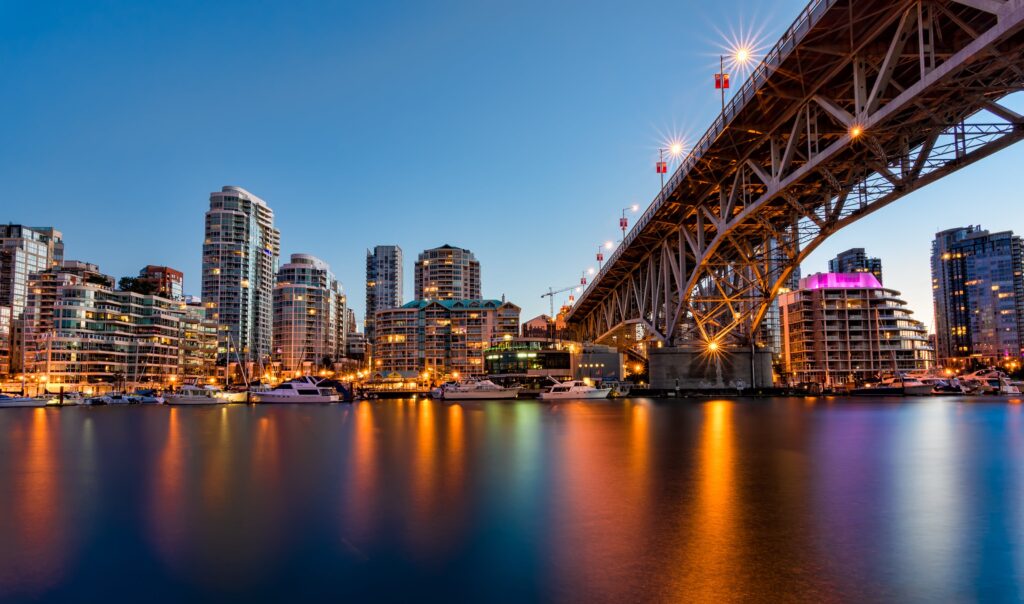
Interested in learning more? Contact Luxury Round the World for a complimentary booking consultation.
Contact UsThe Onboard Experience
Welcome Aboard
Seabourn Sojourn enchants her guests with an array of public areas scaled to encourage a relaxed sociability. One of the most unusual features of Seabourn Sojourn and her sisters is the Seabourn Square, an ingenious "living room" that replaces the traditional cruise ship lobby.
About the Seabourn Sojourn
Passenger Capacity
450
Suites
229
Restaurants
4
Public Decks
10
Ship Length
650 Feet
Inaugural Sailing
2009
Cruise Details
Check out our FAQ for details on everything from how to protect your investment with travel insurance to how to pack for the trip of a lifetime.
Rates & Dates
What's Included
A Seabourn World Cruise has an extensive list of ultra-luxury amenities and inclusions:
- Increased Shipboard Credit:
- Ocean View & Veranda Suites: $6,000USD
- Penthouse & Premium Suites: $10,000USD
- Gala Bon Voyage Dinner
- 2 Nights Pre-Cruise Hotel Stay
- Included Round Trip Business Class Air
- Unlimited laundry, dry cleaning and pressing on board
- Handcrafted World-Cruise special events
- Private car transfers door-to-door between home and airport
- Personal Valet luggage shipping to Los Angeles and from Vancouver
- Visa Package* *For US and Canadian residents/passport holders
- Special President's Event, exclusive for Full World Cruise guests
- Special pillow gifts, exclusive for Full World Cruise guests
- Exclusive private dining experiences and sensational tasting menus
- Upgraded Stream Wi-Fi packages for all full World Cruise guests, powered by Starlink
- Included medical services package, valued at $1,000
- 50% Reduced Deposit at Booking
- All dining venues are complimentary
- Complimentary in-suite bar
- Complimentary premium drinks on board
- No gratuities required
Dates
Date
Double
Single
January 6, 2026 — May 15, 2026
From $79,999 per person
Inquire
Join Us
The world's most iconic places, remarkable experiences, and not-to-be-missed natural wonders are waiting for you.

